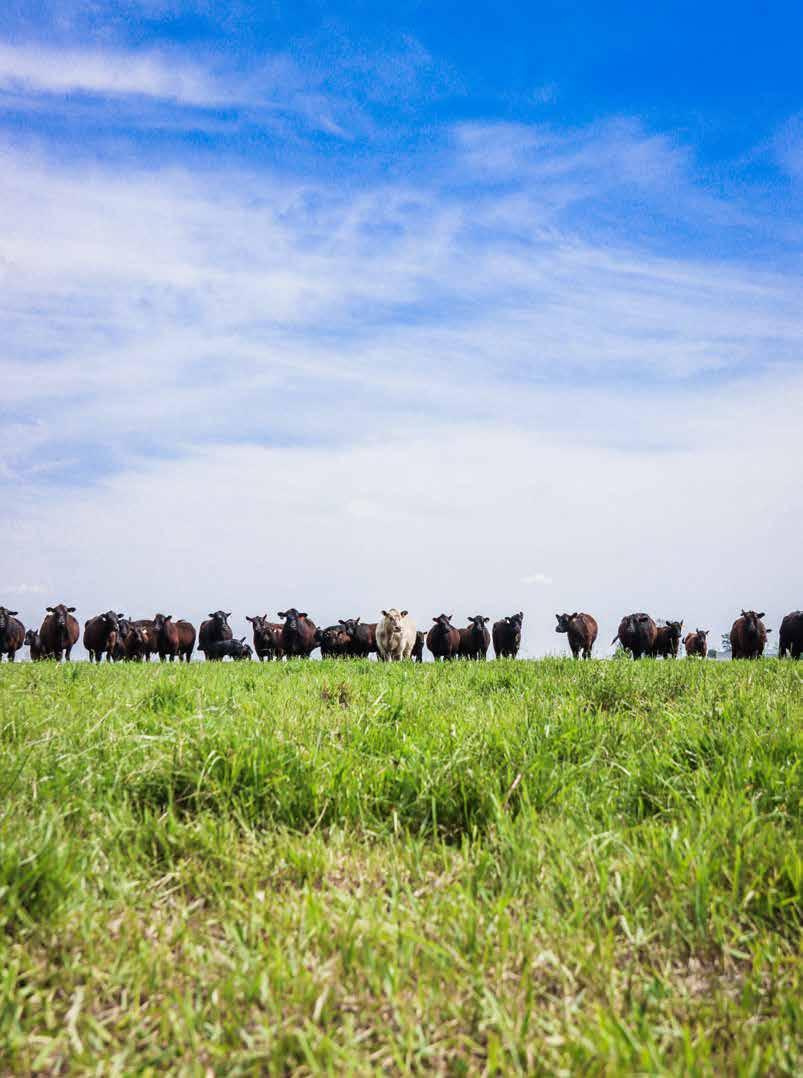


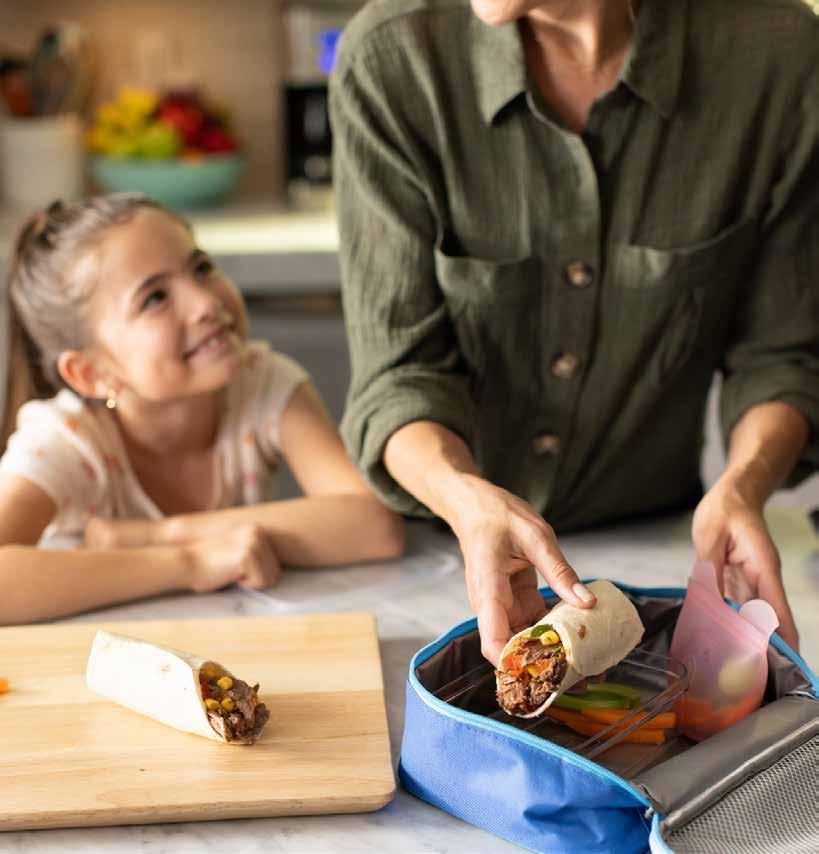





Nutrient-dense foods, like lean beef, contain high-quality protein, iron, zinc, choline and B-vitamins. These essential nutrients help build strong minds and strong bodies.

1. U.S. Department of Agriculture and U.S. Department of Health and Human Services, Dietary Guidelines for Americans, 2020-2025. 2020.
3. U.S. Department of Agriculture FoodData Central, Available at fdc.nal.usda.gov (Beef composite, cooked – NDB Number 13364). 2019.






Over 200 Illinois cattlemen and women, and industry partners, gathered in Springfield on June 3 for the 2025 Illinois Beef Association Annual Meeting and Awards Ceremony.

Grain or Grazing?
Have you ever wondered what it really looks like to make the most of 80 acres in Illinois? Katelyn Engel decided to investigate.

Whether producers are just getting started or are already implementing grazing strategies, here are three simple ideas to help guide land management decisions.

Environmental Steward of the Year winners, Hanson Land and Cattle, take a solutionsfocused approach to sustainability.





Shannon Welsh, Blandinsville President
IBA Board of Governors
Email: cowdynasty@yahoo.com


Larissa Willrett, Malta
Vice President
IBA Board of Governors
Email: lwillrett1313@gmail.com
Directors
Chair: Justin Rahn
Vice Chair: Ted Prehn
Secretary/Treasurer: Scott Wetzell
District 1
Justin Rahn, Mt. Carroll, justinrahn@hotmail.com
1st term expires: 2025 | 2nd term expires: 2028
District 2
Vacant
District 3
Doug Hanson, Danforth, dough@proharvestseeds.com
1st term expires: 2026 | 2nd term expires: 2029
District 4
Cody Lowderman, Macomb, codylowderman@yahoo.com
1st term expires: 2024 | 2nd term expires: 2027
District 5
Joan Harrison, Minier, joan.harrison16@yahoo.com
1st term expires: 2027 | 2nd term expires: 2030
District 6
Lisa Nafziger, Stanford, craig.lisa.nafziger@gmail.com
1st term expires: 2028 | 2nd term expires: 2031
District 7
Kevin Rose, Salem, krr1998@hotmail.com
1st term expires: 2024 | 2nd term expires: 2027
At Large Directors
Scott Wetzell, Tampico, sdwetz@gmail.com
1st term expires: 2026 | 2nd term expires: 2029
Trevor Maiers, Payson, tmaiers98@gmail.com
1st term expires: 2028 | 2nd term expires: 2031
Ben Lehman, Hanover, lehmancattle@gmail.com
1st term expires: 2028 | 2nd term expires: 2031
Dr. Cal Schafer, Galena, cal.schafer1952@gmail.com
1st term expires: 2028 | 2nd term expires: 2031
Rick Dean, Le Roy, deanfarm4@gmail.com
1st term expires: 2024 | 2nd term expires: 2027
Ted Prehn, Jerseyville, tedprehn@gmail.com
1st term expires: 2026 | 2nd term expires: 2029
Bradley Wolter, Aviston, windyhillmeadows@gmail.com
1st term expires: 2028 | 2nd term expires: 2031
Executive Vice President
Programs & Services Manager
Membership & Marketing Manager
Public Relations Manager
Directors
Chair: Thaddeus Tharp
Vice Chair: Jamie Martz
Secretary/Treasurer: Betsy Pech
District 1
Anna Flikkema, Lanark, flikkema.anna@gmail.com
1st term expires: 2025 | 2nd term expires: 2028
Lou Lamoreux, Lanark, unclelou49@gmail.com
1st term expires: 2023 | 2nd term expires: 2026
District 2
Dr. Buzz Iliff, Wyoming, buzzwithcow@yahoo.com
1st term expires: 2028 | 2nd term expires: 2031
VACANT
District 3
Jamie Martz, Maple Park, jamiemartz85@gmail.com
1st term expires: 2024 | 2nd term expires: 2027
Kip Harms, Cullom, harms2@frontiernet.com
1st term expires: 2026 | 2nd term expires: 2029
District 4
Carol Lock, Avon, clock7857@gmail.com
1st term expires: 2025 | 2nd term expires: 2028
Thad Tharp, Monmouth, tthaddeus88@gmail.com
1st term expires: 2023 | 2nd term expires: 2026
District 5
Betsy Pech, Lincoln, bpech55@gmail.com
1st term expires: 2027 | 2nd term expires: 2030
Darin Smith, Alexander, simmybreeder68@hotmail.com
1st term expires: 2023 | 2nd term expires: 2026
District 6
Matt Witte, Heyworth, matthewcwitte@gmail.com
1st term expires: 2028 | 2nd term expires: 2031
Wendell Alwardt, Altamont, walwardt1@yahoo.com
1st term expires: 2023 | 2nd term expires: 2026
District 7
Garrett Mattox, Anna, bigmcattle@hotmail.com
1st term expires: 2025 | 2nd term expires: 2028
Ryan DeWitt, Cobden, rdewitt93@gmail.com
1st term expires: 2026 | 2nd term expires: 2029
Josh St. Peters, josh@illinoisbeef.com
Annie Schoetmer, annie@illinoisbeef.com
Devin Bollman, devin@illinoisbeef.com
Olivia Hoots, olivia@illinoisbeef.com
Dave Duzan
Travis Meteer
Dr. Teresa Steckler
Past President
U of I Extension
U of I Extension



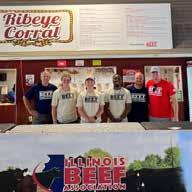



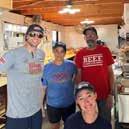
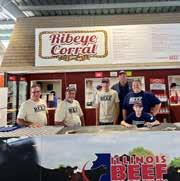
Shannon Welsh, Illinois Beef Association President
At our annual IBA meeting we had a variety of sessions focused on everything from biosecurity to processing capacity. Today, I want to share an article published by the National Cattlemen's Beef Association about a recent biosecurity webinar. Please enjoy.
During a recent Cattlemen’s Webinar Series event, experts discussed how biosecurity can protect an operation’s financial investments and ensure the overall health of the herd. Developing a biosecurity plan and implementing simple practices can go a long way in helping farms and ranches prevent disease and recover quickly when herd health issues arise.
At a fundamental level, implementing biosecurity practices keeps diseases from coming onto and leaving an operation. While zero risk does not exist, the goal is to minimize the risk of spreading disease and parasites between animals and between animals and people. In a global economy where millions of people and goods traverse the globe every day, it is vital to be diligent.
“Ultimately, we want to keep cattle healthy and in good shape to be able to handle a variety of weather, environment and disease situations,” said Lisa Pederson, extension specialist with North Dakota State University. “A good program protects the herd from diseases in which there is no good or inexpensive vaccine available.”
Implementing biosecurity practices can seem daunting, however, Pederson recommends “taking bites of the easy stuff” to get started. Here are a few simple tasks producers can undertake to begin their biosecurity journey.
1. Establish a strong working relationship with a veterinarian.
This relationship is more than having a veterinarian come to the operation to conduct pregnancy checks and vaccinate; it means utilizing their expertise and disease knowledge to help identify biosecurity strengths and weaknesses. Work with a resource team, which may include a veterinarian, operation supervisors, nutritionist, extension specialist, suppliers, BQA state coordinator and others to develop a plan based on the operation’s level of risk, business needs and goals. It is also important to develop a communication plan before an emergency occurs, detailing how the team will communicate, why communication is necessary, and who needs to be reached in case of an emergency.
2. Have separate footwear and clothing for wearing on and off the ranch.
Diseases and pests hitch rides on dirt, dust and manure, which can be readily found on boots and clothing. It is important to remove manure, mud and other organic matter and disinfect regularly. Use the same principles for traveling to another ranch or livestock operation.
3. Have a quarantine/isolation plan for newly acquired animals.
Whether animals have been purchased or are on loan,
isolate newcomers for at least 21 days, ideally without noseto-nose or fence line contact, and without shared feed and water. This also allows for observation, testing and vaccination.
4. Keep records.

Keeping records of livestock purchases and sales, disease recognition or treatment, as well as movement to exhibitions and shows, is imperative should a disease outbreak occur.
5. Create and implement a biosecurity plan.
Understanding what biosecurity risks are present is the first step to mitigating those risks. The Beef Quality Assurance (BQA) Daily Biosecurity Plan for Disease Prevention is a good resource to work through with a veterinarian. For foreign animal diseases like foot-and-mouth disease, the Secure Beef Supply plan provides enhanced biosecurity steps to prepare before an outbreak.
Pederson reminds producers that biosecurity is not about creating a plan and putting it on a shelf; in order to be most effective biosecurity practices must be intentional and done on a daily basis.
“Developing protocols is the cheapest and most effective means of disease control as no disease prevention program will work without biosecurity,” she said. “It is more profitable to prevent problems than to correct them.”
Wulf Cattle, which has seedstock and feedyard operations in Minnesota and Nebraska, takes biosecurity seriously and understands the value of record keeping. Casey Fanta, seedstock manager with Wulf Cattle, stressed the importance of creating a vaccination plan, which is important to ensuring calf health.
“Whatever your program is, it is important to have protocols in place and know the health of cattle from the time they are born,” Fanta said. “The combination of vaccinations and good nutrition, along with tracking records, results in long-term success.”
Wulf Cattle relies on electronic identification (EID) to document animal health records, including disease testing, treatment and movement.
“If there is ever a problem with an animal, we know its history, and can respond quickly,” Fanta said. “In addition, EIDs are instrumental in shipping cattle across the country with ease.”
Biosecurity helps ensure the security of business by preparing producers before an outbreak occurs; aids in the prevention of both everyday diseases and foreign animal diseases; and keeps the food supply safe by maintaining animal health. The biosecurity journey begins with small steps and by tackling a few tasks today, producers across the country can minimize disease challenges and improve animal health, resulting in better economic benefits.
Start the journey today with biosecurity resources available at ncba.org/producers/biosecurity-resources.
What does the opportunity to serve as the new IBA President mean to you?
The role of president is not just about leadership but also about making a difference in the beef industry by helping shape policies and programs, and advocating for the interests of beef producers in Illinois.
How did you originally become involved with IBA?
When Joni Bucher was nominated for Vice President she was talking with me at our local 4-H fair and got me interested. I ended up filling her Checkoff seat for District 4.

Cut of steak/beef meal: Prime Rib
Breed of cattle: Simmental IBA program/service:
Illinois Beef Leadership Academy
Genre of music while doing chores/favorite song: I listen to several types of music but mostly country
Why is it important for Illinois beef producers to be a part of our grassroots organization?
It is the only way we know the needs, problems and concerns they are having on their own farms and then determine how IBA can help.
Tell me about your own operation!
My wife, Renee, and I, and our three kids, are a family farm with row crops of corn and soybeans and cattle. Our cattle operation is cow-calf with mostly Simmental, Angus and some Red Angus. We focus on breeding and show cattle. All our kids enjoyed showing cattle. We also have a custom recip herd and sell pregnant recips or sell weaned calves.

Do you have a favorite IBA memory?
I have a lot of good memories but always enjoy Illinois Beef Expo in February!
What do you hope to contribute to IBA as president?
As IBA president I hope to ensure the voices of beef producers are heard in legislative and regulatory matters and policies that effect the economic viability of the beef industry.
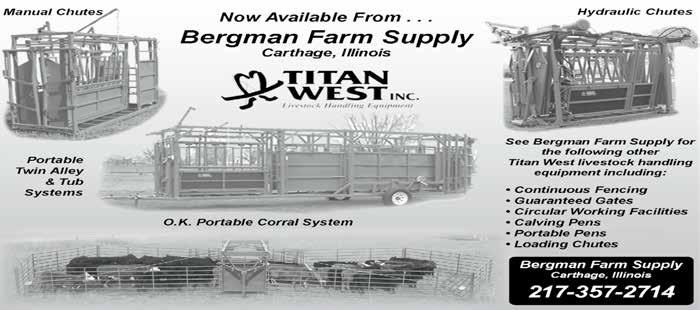
Josh St. Peters, Illinois Beef Association Executive Vice President
Value delivered: higher quality in a higher priced marketplace
I recently came across a social media post by Altin Kalo that I think is worth celebrating in this month’s issue of Illinois Beef magazine. If you don’t know Kalo, he’s the Head Economist for Steiner Consulting Group, where they spend a lot of their time deeply entrenched in data on global livestock production and the cause-and-effect data that drives our livestock markets. They are leaders in reporting trends and observing changes in how animal proteins are produced, marketed, and ultimately, consumed by shoppers around the globe.
So Altin’s recent LinkedIn post about ordering steak from a restaurant menu caught my attention, as it spotlighted the great work you are doing as producers – and the strong reward we are all enjoying from our consumer-customers. His post told the story of a menu highlighting the virtues of Prime beef – calling out that “only the top 3% of steaks” make the grade to be this top quality.
Economists are funny creatures. Most people would be salivating at the menu mention for the best-of-the-best steaks. For Kalo, it became a call to action to dive into data and prove that far more than 3% of steaks are coming out on top these days.
A recent review of slaughter data for U.S. beef packers showed him some very promising results. He reported that during the first half of the month of May, nearly 14% of the carcasses processed graded prime. According to the same data, that is a solid improvement from a year prior, when just over 11% of the carcasses were grading prime. And he probed further and found that in 2023 – during the same period –about 9% of the carcasses were grading Prime. So, in three years, the supply of higher quality cattle grew by about 5% (for the snapshot period being reviewed).
Kudos for the great achievement! That’s a handy report card on U.S. beef production, and a testament to the efforts across all sectors to raise better calves, feed better cattle, and generate higher quality carcasses.
I recently got asked by a Chicago news reporter why people keep paying so much for beef? Retail prices have stayed very strong as we know, and the reporter’s questions centered around reporting higher grocery costs across the board and inflation, and overall trends in consumer spending.
The answer to her question, in large part, is in the data highlighted by the Steiner folks. They’re spending money on premium products. Beef has gotten more expensive on account of the record-short supply, inflation and steady demand. Market economics are driving the price point at the retail meat counter. But the quality of that beef hasn’t lacked any, and as USDA’s numbers support, we’re building better beef into the supply chain with each new year.
I’m a believer that all beef tastes great (I hope you subscribe to this same thinking). Some cuts have a better
preference on my palette, and different cooking techniques may bring out a more desired texture or tenderness – but the lean, red meat protein that our industry puts on the table is truly a great gift to the senses. But it’s to our advantage that our forefathers developed and subscribed to the process of grading and marketing standards that call out quality traits. Consumers have been trained to look for signs of greatness in their meat, and that’s exactly what was being pointed out in the restaurant menu on the social media post I saw. It was as if the chef was saying, “Order the beef. It’s the best – and there’s data to back up that claim!”
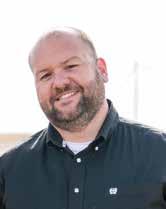
The Cattlemen’s Beef Board highlighted research recently funded through the Beef Checkoff that showed indisputably consumers put taste over price when it comes to protein purchasing decisions. So, we’re delivering on the research findings and researching the right things to support our market opportunities.
And the fact that beef keeps grading better shows that we’re not backing off the efforts to strengthen our place at the center of the dinner plate.
There are probably several production variables contributing to this trend. First, we know that genetics plays a role in most cattle’s production capabilities, including how cattle finish and how they marble. We also know that market dynamics have driven our carcass size up in recent years, and that means that we’re probably feeding more steers a little longer, and that, too, drives up the likelihood of more cattle grading prime. We’re taking the time and using the resources to fully deliver on that animal’s genetic potential.
We’re also striving to achieve more consistency, at the farm and at the packer. The beef industry is investing a lot in quality standards. You’re all participating in beef quality assurance programs, and those efforts shine through in this kind of data, too.
Value is what we build on with each improvement we make. Higher quality beef delivers on that taste, texture and experience that consumers come looking for at the case – and it’s helping support prices in that meat case, too.



During the Illinois State Fair you can find the IBA Board of Governors and staff speaking with policy leaders on Agriculture Day, organizing junior events, running Ribeye Corral and more, all in an effort to serve members and promote beef to consumers. We hope to see you there!
Monday, August 4
Junior stalls/tie-outs and Open tie-outs available @ 8:00 a.m.
Tuesday, August 5
Cow-calf check-in 8:00-10:30 a.m.
Breeding female check-in 8:00-3:00 p.m.
IJBA Jackpot Show card pick-up during junior beef show check-in from 8:00 a.m. to 3:00 p.m.
IJBA membership meeting and junior board elections at 5 p.m. More information can be found on page 50.
Wednesday, August 6
Junior/Open steer check-in 8:00-11:00 a.m.
Showmanship check-in until 10:00 a.m.
Junior Showmanship @ 1:00 p.m. (Livestock Center)
August 7 - 17
IBA members volunteer at Ribeye Corral. More information can be found on page 5.
Thursday, August 7 - County Fair Day!
Junior Heifers: Red Angus, AOB, Maine Anjou, Maintainer, Charolais, Hereford, Polled Hereford, Chianina, Limousin, Shorthorn and Shorthorn Plus beginning @ 7:30 a.m.
Bring-in Beef. It's What's for Dinner. contest.
Friday, August 8 - Agriculture Day!
4-H Superior Young Livestock Producer Contest Junior Performance Cow-calf: AOB, Angus, Hereford, Polled Hereford, Shorthorn, Simmental @ 7:30 a.m.
Junior Heifers: Angus, Simmental, Low % Simmental @ 8:00 a.m.
Junior Supreme Champion Female selection to follow in the Livestock Center.
Open Shows: Maine Anjou, Maintainer @ 8:30 a.m. Charolais @ 11:00 a.m.
Friday, August 8 (continued)
Master Showmanship Contest @ 5:00 p.m., OR 30 minutes following the colclusion of the junior show.
Saturday, August 9 - Kids Day!
Junior Steers: Composite Charolais, Maine Anjou/ Mainetainer, hereford, Angus, Shorthorn, Simmental, AOB, Shorthorn Plus, Chianina and Crossbred beginning at 8:30 a.m.
Open Shows: Polled Hereford/Hereford @ 8:00 a.m.
Grand Champion Junior Steer Selection in Coliseum @ 5:30 p.m.
Junior cattle released at conclusion of steer show.
Sunday, August 10 - Veterans & Gold Star Families Day!
Open Shows: Limousin, Simmental (30 minutes after Limousin), Low % Simmental (30 minutes after Simmental) @ 8:00 a.m.
Open Steers @ 9:00 a.m. in Junior Livestock Barn
IJBA Jackpot Show @ 12:00 p.m.
Monday, August 11 - Senior & Scout Day!
Open Shows: Shorthorn, Shorthorn Plus, Angus @ 8:00 a.m.
Tuesday, August 12 - Twosday!
Discounted admission and $2 rides. Beef. It's What's for Dinner. bring-in contest.
Wednesday, August 13 - Governors
Governor’s Sale of Champions - Coliseum of Champions @ 4:30 p.m.
Thursday, August 14 - Republican Day!
Friday, August 15 - First Responder/Healthcare Heros Day!
Saturday, August 16 - Park District Day!
Sunday, August 17 - Family Day!
TEAM BEEF Committee Members run in the "Abe's Amble."

Travis Meteer, University of Illinois Extension Beef Specialist
Weaning is arguably the most stressful event in a calf's life. Combining stressors at weaning can inhibit immune response, thus triggering health problems and poor gains.
Knowledge of the four major types of stress can help producers devise a weaning strategy around reducing them.
1. Social stress: Prior to weaning, the calf’s mother is a guide for social hierarchy, she serves as a guide to food, she provides milk and takes the calf to new forage. The calf, prior to weaning, spends time following mother and using her as "home base."
2. Physical stress: In many cases, calves are gathered and worked at weaning. The physical stress of hauling, being ran through a chute, given shots, castrated, and dehorned can all compound stress on the calf.
3. Nutritional stress: The calf no longer has milk. Changing from a grass/milk diet to a hay/grain diet can be stressful on the animal and its digestive system. Any change in diet may result in unfamiliarity and lower feed intake. A change in the type of water source can be a stressor. Weaning is not the time to teach an animal to drink from an automatic waterer.
4. Environmental stress: The obvious environmental stressors would include dust, mud, excessive heat, and lack of shelter/shade. These environmental stressors need to be managed. Some environmental stressors you may not think of would be the sights and sounds of tractors, people, and pets. The frequency of these interactions are likely far greater post-weaning. Removing the calves from a pasture and hauling them to a drylot may mean a totally new environment and all these stressors can add up.
Here are a few strategies that are easily deployed to lower stress at weaning time.
• Creep Feeding- Providing creep will increase the familiarity of feed when the calf is weaned. Using a similar diet for creep and post-weaning rations will help ensure cattle have good intakes at weaning. Good feed intake is the foundation to healthy calves as proper nutrition will support immune system responses. Economics of creep feeding will vary from year to year, but creep feeding for a minimum of two weeks prior to weaning is my recommendation.
• Pre-Wean Castrate and Vaccination- running cattle through the chute for castration and vaccination BEFORE weaning is a good practice. Castration at birth may be an option if you do not plan to retain bull calves, but can decrease weaning weights. Pre-wean vaccinate and castrate can occur around 60 days post calving when a calf implant can be used on culls. Letting calves handle these stressors while still having their mother at their side will lessen the stress significantly.
• Fence-line Weaning- research has shown calves that are fence-line weaned eat more, rest more, and vocalize less than calves separated and weaned in a drylot. They also
gained 27 lbs. more in the two weeks post weaning and still had a 13 lb. advantage after 10 weeks. The familiarity with the environment (pasture), the feed (grass and creep), and the sight of their mother all help reduce the stressors on the calf. Fences need to be equipped to keep the separation.

• New technologies- several new innovations are helping reduce stress at weaning. Maternal Bovine Appeasing Substance (MBAS) is a relatively new tool to use to aid in mitigating the effects of stress, especially weaning stress. The product (brand name FerAppease) has shown through research to lower cortisol levels and increase average daily gains post-weaning. Many producer testimonials support MBAS aiding in weaning transition and keeping cattle coming to the bunk during weaning time. Another product “Lidoband” is a castration band containing lidocaine as a local anesthetic for pain control. This user-friendly method of localized pain control is just another innovation helping mitigate stress in livestock.
No matter what system you choose to deploy on your farm, apply some common sense weaning approaches. Simply paying attention to other potential stressors can help improve the welfare of weaning and gains of cattle. Some common sense approaches would be:
• Avoid dusty or muddy pens as location for weaning. Dust can be a large irritant to eyes and lungs which could result in more pinkeye and respiratory issues. Mud can increase maintenance requirements, decrease performance, and increase bacterial load.
• Ensure that the water is familiar and placed in the travel of the calf. Water is the most important nutrient. Fresh, cool water that is in a familiar waterer will help calves stay healthy and on feed.
• Feed a nutrient dense diet at weaning. Intake will be lower than normal at weaning, thus making sure calves are getting enough nutrition will demand a nutrient dense feed. Avoid any filler feeds at weaning that lower nutrient density or could be sorted by more aggressive animals skewing the diet for more timid calves.
• Avoid drastic changes in diets. If calves have only consumed pasture and milk, a heavy concentration of grains is not best. The ruminant stomach is sensitive to pH changes that occur in rapid, extreme shifts from grass (fiber) to grains (starch). Using fiber-based co-product feeds and a balancing mineral supplement are better in this scenario.
• Use good stockmanship when handling cattle. Understand cattle behavior. Work with the cattle’s natural behavior, not against them. Use low-stress handling practices, improved facility designs, and be patient when processing calves.

Paul Walker, Professor Emeritus, DI Walker Consulting
This article highlights some of the points made by the panel discussion at the IBA Annual Meeting titled “Expanded kill capacity in the Midwest: What does this mean for Illinois?” It could mean increased competition for finished cattle. It could result in higher prices for fat cattle. It should cause an increase in cattle numbers within Illinois - both cow-calf and feedlot numbers. It may depend on the total U.S. shackle space. Will older plants close? Will newly built plants have to close or will the proposed plants not open? Can new plants operate economically for the next 3 - 4 years until cattle numbers build back some? A related question is, who will ultimately own the new plants - the new owners or established packing corporations?
In 2020 the NCBA estimated the U.S. beef industry was short 5,700 hooks to meet the volume of cattle harvested each day. Table 1 shows the major packing plants proposed for construction in 2022 or after. The important take away from this table is that the four new plants currently on-line or soon to be on-line exceed the 5,700 hooks estimated as necessary to handle the volume of cattle harvested in 2020; and three of these four plants are within hauling distance for cattle finished within Illinois.
Specific to Illinois, Illinois cattle feeders market 270,000 head per year. That number has been static since the late 1980’s. In 1987 that number ranked Illinois as the seventh largest cattle feeding state in the nation. By the early 1990s that number ranked Illinois 11th in finishing cattle and today it ranks Illinois 13th. The good news is the number of cattle finished in Illinois has not dropped in 40 years, but it has not increased either. That 270,000 cattle represents two and
a half days of the national harvest. A stable number of finished cattle in Illinois is not a bad thing, but it should be increasing. Here are some reasons why.

Illinois has excess harvest capacity and thousands of cattle are imported into Illinois for harvest each year. Tyson Foods at Joslin harvests 3,100head/day – equivalent to around 806,000 cattle per year. Aurora Packing harvests 450 cattle per day or about 117,000 cattle per year. Beginning in September of 2025, Aurora Packing will harvest 1,000 head per day –about 260,000 per year. These statistics mean beginning this fall over one million head of cattle will be harvested each year in Illinois and only one fourth of that number will be finished within Illinois. In addition to these two major packers, Illinois has 46 state-inspected locker plants that harvest cattle, and several federal inspected locker plants. Important point, the Illinois cattle feeding industry has room to expand.
Illinois has several advantages for finishing cattle that other states do not have. They include: ample/excess water (both rivers and aquifers); excess feed supplies (both traditional – corn and soybean meal and nontraditional – DGS, human food scrap, etc.); a lot of local consumers (Chicago, St. Louis, the University Belt – Peoria, Bloomington/Normal, Champaign/Urbana); excess cattle harvest capacity; central location (Illinois is the center of the U.S. and close to everywhere); an extensive interstate system [two north-south interstates (57 and 39) and 7 eastwest interstates (55, 80, 70, 90, 64, 88, 72), Illinois has more interstates for easy livestock hauling than any other state]; many food companies (over 900 with offices within Illinois);
Announced 2022 or after (In 2020 NCBA said U.S. short 5,700 hooks)
Company Location Cattle Type Capacity (Head) Status
• Producer Owned Beef, LLC Amarillo, TX Fats 3,000 In Operation
• America’s Heartland Packing Wright City, MO Mixed 800-1,200 Started in May
• Sustainable Beef LLC North Platte, NE Fats 1,500 Started in May
• Aurora Packing Company Aurora, IL Fats 550 Starts in September
• Cattlemen’s Heritage Des Moines, IA Fats 2,000 ?
• Saline River Farms LLC Creal Springs, IL Mixed 1,600 ?
• True West Beef (Agri Beef Co) Jerome, ID Fats 500 ?
• Intermountain Packing Idaho Falls, ID Fats 500 ?
• Next Generation Beef (Kingsbury & Associates and Sirius Reality) Rapid City, SD Fats 8,000 ?
• Numerous Other Groups Across the US Mixed 200 ?
and, stable beef numbers and stable feedlot numbers. An often-underestimated advantage for feeding cattle in Illinois is the fact that Illinois has expert cattle feeders. In 2006 the U.S. produced 41% select, 2% prime and 56% choice carcasses. In 2024 the U.S. produced 11.1% select, 11.9% prime and 75% choice carcasses. And, of the total number of prime carcasses Texas produced 5.6% of the prime carcasses while Nebraska produced 15% of the prime carcasses and, I suspect the number of prime carcasses produced within Illinois is very similar to the number of prime carcasses produced in Nebraska. Illinois cattle feeders can finish high quality cattle that sell at a premium price.
Currently the beef cattle industry is at a defining moment in history. Is the industry going to increase cattle numbers sufficiently to meet consumer demand or not? We have lost demand since the 1970s. According to Pearl Buck “If you want to understand today, you have to search the past.” A previous defining moment within the beef cattle industry began in 1973.
• Fat cattle were $35 - 42 cwt.
• Corn went to $3 per bushel from $1.50 per bushel.
• U.S. Secretary of Agriculture encouraged farmers to plant fence row to fence row.
• Gas was 50 cents per gallon.
• The oil embargo occurred, resulting in gas lines.
• Feeder cattle were at record prices and feedlots lost money. Illinois feeders closed a lot of feedlots.
• Retail beef prices were increasing.
• Grocery store butchers went on strike for more money, they were still cutting carcasses in grocery stores at that time.
• Consumers boycotted beef and retail beef sales plummeted.
• End result cattle numbers peaked, and beef consumption peaked in 1975/1976.
• The boxed beef concept was initiated.
• The first Checkoff referendum was defeated in 1978.
• Illinois cattle numbers decline substantially (both cowcalf and feedlot numbers).
Fast forward to 2025. The situation today has similarities but is different, but the industry is still in a defining time period. How will the Illinois cattle industry respond?
• Fats are $220+ per cwt.
• Corn is $4.60 per bushel
• Gas is $3 per gallon
• Feeder cattle are record priced but this time feedlots are making money.
• Retail beef price is at record highs.
The questions are:
• Will consumer demand hold?
• Will consumers continue to buy beef at premium prices?
• Will fat cattle prices hold?
Currently there is money to be made in the cattle industry both within the cow-calf segment and within the finishing segment. Again, how will Illinois producers respond?
Dan Koons (past NCA/NCBA President, Illinois cattle feeder and manager of Funk Farms) said it best “if you wait to buy feeders until they pencil, you will never feed cattle.” Something to think about. Have a great day. Doc


Larisa Willrett, Illinois Beef Association Vice President
In another life, before my life in Illinois with my husband, our three kids and the farm, I worked at National Cattlemen’s Association. One thing that has seemed to grow throughout my life is the appreciation I have for grassroots organizations, specifically IBA and NCBA.
With a constantly changing economy, political scene and beef industry, I am a firm believer in the ability for us as producers to take a stand. These organizations make this possible. Alone we have beliefs, with others there is ability.
Take a family for instance. A single person might rent a house, while a couple might buy a house – the desire to have an enjoyable living space might have been there, but it came to fruition when resources were combined.
Now explain this to your producer friends who refuse to become members. Talk about hard things, then remind them of the effectiveness of a joint voice.
Right now, producers are staring at the cattle prices in constant anticipation of a change. You need the ability to have protection from that change. Or, take the New World Screwworm south of our border.
How are we able to effectively prevent damage? With our voice. NCBA is actively pursuing key producer issues in various realms like disease, taxes and more, for you and me, in Washington, D.C. among lawmakers.
Can you get to D.C. on a random Wednesday to knock on
Keep cattle producers showing up! Our industry’s future rests on cattlemen and women sharing their story, advocating in Congress, and sharing the truth about our industry. This is only possible with a strong NCBA membership. Help secure the future of our industry by recruiting your friends, family and neighbors to join our fight. Recruit new members and be rewarded for your support with special gifts and prize drawings!
President Trump’s door and give him your opinion on New World Screwworm? I didn't think so.
So, let grassroots organizations like NCBA fight for you. And IBA is working hard with lobbyists in Springfield to ensure harmful legislation dies and beneficial bills advance to become law.
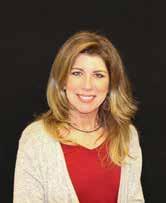
You can hear it in the back of your head, can't? The producer down the road asking how IBA decides what is important.
Our board meets to verify that our interactions align with our members' goals. And if you are still concerned, maybe consider coming to our Annual Meeting and Awards Ceremony next year. It's an opportunity to participate in educational sessions, hear from EVP Josh St. Peters about how IBA is serving us and recognize our outstanding members. You will also have an opportunity to have your voice heard to ensure your community of producers is being represented.
Feel free to call our office to learn about becoming an NCBA member, or to learn how to get your buddy down the road signed up as an IBA member. We are so thankful you are an IBA member, supporting our grassroots efforts in service to producers.
Scan QR code and join us today!


What does the opportunity to serve as the new IBA Vice President mean to you?
I believe in giving back, whether to society, to God or to an industry that has provided a great, fulfilling life for myself and my children. I have a strong desire to see beef production not only succeed, but progress for my operation and our state. That desire, coupled with my knowledge of the challenges and opportunities our producers face would help make me an effective leader. There’s a quote that “the world is run by those who show up.” I believe it’s my responsibility to “show up.” I’ve faced a mountain of steep learning curves over the last year and have benefitted by learning from and listening to others more knowledgeable than I on a variety of issues I’d had limited experience with, reinforcing the adage that you’re never too old to learn. Selfishly, being in an IBA leadership role would also provide an opportunity for me to listen to and learn from other producers, policy makers and community members around the state.
How did you originally become involved with IBA?
I became involved with IBA when I was working for the National Cattlemen’s Association in charge of membership for 23 Midwest and eastern states, which is how I met my husband, Jamie, when he was IBA president.
Why is it important for Illinois beef producers to be a part of our grassroots organization?
Cut of steak/beef meal: Filet, baked potato and salad Breed of cattle:
Any that’s feed efficient and grades Choice or higher!
IBA program/service:
Illinois Beef Leadership Academy Genre of music while doing chores/favorite song: Red Dirt Country/Koe Wetzel Something to Talk About
IBA is respected as a thought leader and influencer in Illinois among other commodity groups as well as among legislators and the Governor’s office. That reputation has been intrinsically cultivated through the grassroots membership to the leadership with the support of a knowledgeable staff. Additionally, IBA not only supports members’ business interests in Springfield, but also provides vital producer education opportunities throughout the state on a variety of topics, coordinates the BQA Program throughout Illinois and promotes our product – beef – to the urban population.
J. Willrett Farms is a sixth-generation, diversified cattle feeding and grain farming operation in DeKalb County. My husband and I were partners until his death last year, and two of my three children and my daughter-in-law are actively involved in running my operation with me.
Do you have a favorite IBA memory?
Hope to make some!
What do you hope to contribute to IBA as vice president?
The relationship between IBA and its members is symbiotic. Members benefit from the extensive services IBA provides, but IBA wins when producers are successful as well. I enthusiastically support and advocate for my business because it’s my livelihood. How can I then not be an enthusiastic supporter of IBA when all the programs and services IBA offers are for the direct benefit of my operation. I would hope my commitment as a leader, serving in the multiple capacities required, would serve as an example to others of the important role IBA plays in supporting Illinois beef production as well as the importance of getting involved and supporting your industry.

Knox County Cattlemen's Association gave away ten FREE beef bundles in partnership with Fareway in Monmouth to celebrate May Beef Month. Consumers could enter the giveaway two different ways, by purchasing beef at Fareway and filling out a ticket, or through social media engagement on the KCCA’s Facebook page. You can see one of many Facebook posts below, which received over 50 comments. Five consumers were selected from social media entries, and five from in-person entries. The beef bundle giveaway received great community support and engagement.
To close out May beef Month, the Knox County Cattlemen’s Association donated 1,000 pounds of ground beef to River Bend Food Bank to support families within their community. This donation contributed to stocking the shelves at more than five area food pantries.

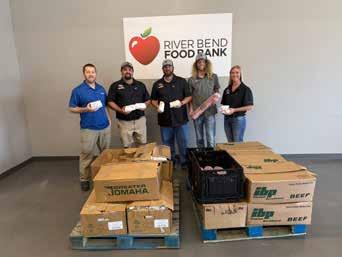
Association donated $1,000 to the Sparta Area Food Pantry/Westminister Church to purchase ground beef from Butcher Block in Sparta. Pictured are Egyptian Cattlemen's Association President, Larry Gross, Secretary/ Treasurer Dwayne Schwarz, Butcher Block employee, Addyson McClaine and Bruce Daglem of the Sparta Area Food Pantry.



Prairie Beef Association(DeWitt, Macon and Piatt Counties) donated 150 pounds of ground beef to a handful of local food banks in celebration of May Beef Month. Thank you to Clinton United Methodist Church, Neighborhood Care Center, and Clinton First Church of the Nazarene for serving our community with free meals and food pantries. The Affiliate Association hopes that they are able to enjoy this ground beef and that it can provide nourishment to their communities. They are grateful to have a local business such as Toohill Seed & Beef Service that provides the community with a wide variety of meat options, all the while supporting their family farm in DeWitt County.
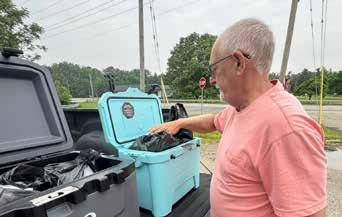

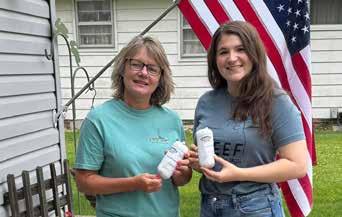


Registration is now open for three Stockmanship & Stewardship events to be held this summer. Stockmanship & Stewardship is a unique educational experience for cattle producers featuring low-stress cattle handling demonstrations, Beef Quality Assurance (BQA) educational sessions, facility design sessions and industry updates.
2025 Stockmanship & Stewardship dates and locations include Springfield, Missouri, on September 4-6 - a close location, perfect for Illinois attendees.
During each event, producers can become BQA certified, network with fellow cattlemen and women, participate in handson demonstrations led by industry experts including Curt Pate and Dr. Ron Gill, and learn innovative handling techniques. Topics including biosecurity and Secure Beef Supply will be discussed, and the Texas program will be feedyard focused and available in Spanish. NCBA CEO Colin Woodall will be the keynote speaker at all three events.
“Cattle handling and stockmanship are core components of BQA,” said Dr. Ron Gill, Texas AgriLife extension specialist. “Animal handling and care directly connect to improved success and profitability of operations.”
Stockmanship & Stewardship is sponsored by the National Cattlemen’s Beef Association (NCBA), Neogen, and the Beef Checkoff-funded Beef Quality Assurance program. The goal of these events is to give cattle producers around the country access to valuable resources, which aligns with Neogen’s mission to provide innovative solutions to enhance animal care, performance and productivity within the cattle industry.
“To us, it is a relationship that is worth being a part of,” said Dr. Kirk Ramsey, Professional Services Veterinarian with Neogen. “It is an opportunity to promote good cattle handling and be part of making the industry what it needs to be.”
For more information about Stockmanship & Stewardship and to register, visit www.StockmanshipAndStewardship.org. Cattle producers attending a Stockmanship & Stewardship event are eligible for reimbursement through the Rancher Resilience Grant. To apply for a grant to cover registration and hotel costs, visit www.ncba.org/producers/rancher-resilience-grant.

The National Cattlemen’s Beef Association (NCBA) announced support for U.S. Secretary of Agriculture Brooke Rollins’ actions to protect the American cattle industry from the rising threat of New World screwworm.
“The U.S. spent millions of dollars to eradicate New World screwworm from our borders in the 1960s but unfortunately, we are now facing this dangerous threat again,” said NCBA President and Nebraska cattleman Buck Wehrbein. “Screwworm is very destructive and could cost American producers millions of dollars a year if it reaches us. Americans have been investing in prevention efforts in Central America for decades, but we can’t stop this without Mexico’s participation. NCBA strongly supports Secretary Rollins holding Mexico to their commitments regarding screwworm eradication.”
In November 2024, the U.S. Department of Agriculture (USDA) was notified that New World screwworm was detected in Mexico. NCBA has been working closely with USDA’s Animal and Plant Health Inspection Service to increase surveillance, inspection, and other measures to counter this pest.
At the same time, NCBA has also been working with USDA to expand the use of the sterile insect technique, which requires the continuous release of sterile male screwworm files that breed with wild screwworms and result in no offspring, eradicating the species.
Unfortunately, Mexican authorities have failed to uphold their end of the agreement by disrupting planes carrying these sterile male files, refusing pilots permission to land, and instituting customs duties on flight components, sterile flies, and sterile insect technique equipment.
“We have received multiple reports that critical flights carrying these sterile flies have been denied permission to land, faced bogus paperwork issues, and been charged high customs fees. As a result, we have lost significant time and investment that has allowed these dangerous pests to spread unchecked into southern Mexico,” said NCBA Senior Vice President of Government Affairs Ethan Lane. “In light of those reports, NCBA met with the Mexican Embassy earlier this week to deliver the message that the Mexican government needs to be a partner on eradicating screwworms to protect both animal and human health. It’s time for Mexican authorities to act and we appreciate Secretary Rollins standing with American and Mexican cattle producers who want to see this pest stopped dead in its tracks.”
NCBA President Wehrbein also met with senior officials at the Embassy of Mexico in Washington, D.C. to press for further action on screwworm eradication. NCBA will continue this critical work to ensure we are protecting U.S. consumers and the health of the American cattle herd.
U.S. Secretary of Agriculture, Brooke Rollins, announced on May 2 the latest slate of presidential appointments for key Farm Service Agency and Rural Development State Director roles. The slate of new United States Department of Agriculture leadership roles included IBA member Bill Graff, who was selected to lead USDA's FSA team in Illinois.

Graff, of Middletown in Logan County, is a lifelong farmer and beef producer. This is his fourth appointment to the State Executive Director position. Previously he has served as a Volunteer Fireman, Township Supervisor, Township Trustee, and School Board member. He and his family are members of the Lincoln Christian Church.
“When America’s farming communities prosper, the entire nation thrives. This new group of USDA appointees will ensure President Trump’s America First agenda is a reality in rural areas across the country. I am grateful for the leadership of these new state directors and look forward to their work reorienting the agency to put Farmers First again,” said Secretary Rollins.
"He will be a tremendous asset to Illinois' farm families as FSA's new State Executive," said Josh St. Peters, IBA Executive
Vice President, "Bill brings proven leadership and vast knowledge of the agency's policies and staff, drawing from a number of prior years at the helm. He can hit the ground running to ensure agriculture in our state is best served."
FSA State Directors help implement President Trump’s America First agenda and execute USDA's policies in planning, organizing, and administering FSA programs through state offices across the country. RD State Directors help affirm the mission of the Trump Administration by focusing on finding ways to empower rural America and unleash economic prosperity.
Years of NCBA advocacy laid groundwork for trade victory
The National Cattlemen’s Beef Association announced support for President Donald Trump’s trade agreement-in-principle with the United Kingdom. Most importantly, the agreement includes market access for beef. This announcement follows years of NCBA’s hard work building the foundation for a trade deal with the U.K., including numerous meetings with British industry stakeholders, Members of Parliament, the British Embassy, the U.K. Department for Environment, Food and Rural Affairs, and other top British authorities.
“With this trade deal, President Trump has delivered a tremendous win for American family farmers and ranchers,” said NCBA President Buck Wehrbein, a Nebraska cattleman. “For years, American cattle producers have seen the United Kingdom as an ideal partner for trade. Between our countries’ shared history, culture, and their desire for high-quality American beef, securing a trade agreement is a natural step forward. Thank you President Trump for fighting for American cattle producers.”
NCBA has spent years advocating for expanded trade with the U.K. When the U.K. left the European Union in 2020, that opened the door to secure trade agreements with countries like the United States. British and American cattle producers share similar values and British consumers also enjoy American beef.
For the past few years, NCBA members have participated in several meetings both domestically and abroad with senior British government officials to educate them on our production practices and the unique attributes of our product. In 2022, the British Ambassador to the U.S., Dame Karen Pierce, attended the 2022 CattleCon and spoke to attendees about the importance of strengthening the relationship between the U.S. and U.K. Last year, NCBA hosted a U.S. versus U.K. “Battle of the Beef” event in collaboration with the British Embassy. This lighthearted event brought top U.S. and U.K. officials— including the British Embassy Deputy Head of Mission, U.S. Chief Agricultural Negotiator, President of the U.K. National Farmers Union, and numerous members of Congress—together to talk about the mutual benefits of American and British trade. In March 2025, NCBA member Robby Kirkland reiterated that message when he testified before the U.S. House Ways and Means Committee in a congressional hearing on trade. NCBA also recently met with current British Ambassador Peter Mandelson.
The National Cattlemen’s Beef Association submitted comments to the U.S. Food and Drug Administration urging the agency to toughen up guidance for fake meat companies that would prevent them from using misleading labels on plant-based products.
“Cattle farmers and ranchers work hard every day to raise wholesome, high-quality, and nutritious real beef. We’ve spent decades building a strong reputation with consumers and we will not give up on that without a fight. Companies selling fake meat should not be allowed to use misleading advertising or trade on beef’s good name,” said NCBA President and Nebraska cattleman Buck Wehrbein. “If you’re manufacturing products to replace beef that contain no real beef, you should not be using terms that are specific to livestock, especially legally defined terms like ‘meat.’
“Likewise, you should not be permitted to utilize pictures of cattle, real beef, or farmers and ranchers in your labeling,” said Wehrbein. “The federal government’s draft guidance for the fake meat industry has not gone far enough to prevent companies from attempting to trick the public into buying fake meat products.”
NCBA’s comments urge FDA to address misleading advertising on plant-based fake meat foods. Plant-based fake meat has been on the market for several years, but sales have tumbled as consumers balk at ultra-processed food. Although the final guidance for industry is nonbinding, closing loopholes that allow plant-based companies to use terms like “beef” and imagery like the outline of a cow are important first steps that benefit real farmers and ranchers. Additional guidance or rulemaking actions may follow in the coming months.
“If you have to hide behind the work of America’s livestock producers to sell your product, that says all you need to know about these inferior imitations,” Wehrbein added.
On May 11, the National Cattlemen’s Beef Association announced support for the U.S. Department of Agriculture’s decision to close the U.S. southern border to shipments of cattle, bison, and horses, due to the continued spread of New World screwworm beyond the phytosanitary border put in place to stop its advance. Today’s announcement is the latest move to halt the spread of this invasive pest that puts the entire U.S. livestock industry at risk.
“For months, NCBA and affiliated state cattle industry associations have been working with USDA officials urging their counterparts in Central America to take stronger action to stop the spread of New World screwworm. In the 1960s, America’s cattle and livestock producers spent years and millions of dollars to eradicate New World screwworm from the United States,” said NCBA CEO Colin Woodall.
The United States has long maintained its commitment to fighting New World screwworm by funding the production of sterile flies needed to keep this pest out of Central and North America. Despite the United States’ work to control the pest, weak governmental participation in Central America allowed the insect to spread north out of Panama. This has been coupled with a lack of timely action by officials in Mexico and now the U.S. cattle herd, other livestock, wildlife, pets, and humans are all at risk again.
NCBA has been working closely with USDA to monitor the situation and has also appealed directly to the Mexican government to do more to intervene and stop the spread. However, a variety of factors have allowed the northward migration of the pest to continue. NCBA and state affiliate volunteer leaders and staff have also worked with members of Congress to help support USDA’s efforts and will continue to seek every possible avenue to protect the U.S. cattle industry by preventing New World screwworm from reentering the United States.
“USDA’s border closure was entirely avoidable. U.S. government officials, NCBA and leaders from affiliated state cattle industry associations have been sounding the alarm for months. Unfortunately, the Mexican government created unnecessary bureaucratic hurdles which rendered prevention efforts ineffective and allowed screwworm cases to spread unchecked beyond control points in southern Mexico,” said Woodall. “The Mexican government’s failure to knock down senseless obstacles has left America with no alternative but a closure of the U.S. border until the outbreak is verifiably stopped and the flies pushed back south of Panama’s Darien Gap.”
NCBA acknowledges that the border closure will create economic harm for U.S. farmers and ranchers, and create supply chain disruptions, but the costs will be far less than if New World screwworm crosses into the United States and we’re forced to fight the pest on U.S. soil.
On May 14, the National Cattlemen’s Beef Association released the following statement in response to the House Ways and Means Committee passing a tax package that provides significant tax relief to family farms and ranches. The bill includes several beneficial provisions including an increase in the exemption amount for the federal estate tax, also known as the Death Tax, a top priority for America’s cattle producers. The tax package must be approved by the House of Representatives as part of




P.O. Box 77 • Virginia, Illinois 62691
Dalton: 217-416-9536
Kerry: 217-370-6033
Don: 217-341-7552
Cindy: 217-370-6034
the reconciliation process.
“The Death Tax is a death warrant for family businesses and the top threat to family-owned cattle operations. NCBA has been working with members on and off the Ways and Means Committee for months to educate them about the needs of cattle producers and advocate for the tax provisions that are the most effective for cattle operations,” said NCBA President and Nebraska cattleman Buck Wehrbein. “This work would not have been possible without the broad participation we had in NCBA’s tax survey from producers, who detailed the struggles they have had with paying the Death Tax and what they would like to see in a broader tax package. This is a huge victory for grassroots advocacy and everyone that made their voice heard—from the producers that have not paid the Death Tax yet—to those that have paid it multiple times to avoid losing their livelihoods.”
The tax provisions in the bill that help family-owned cattle operations the most include:
• An increase to the estate and gift tax exemption amounts to $15 million per individual and $30 million per couple, adjusted for inflation annually, the package also makes this exemption permanent.
• A permanent increase to the Section 199A Small Business deduction from 20% to 23%.
• Expanding the limitation on Section 179 expensing from $1 million to $2.5 million.
• Reinstating the 100% bonus depreciation for five years without a phase out period.
“Thank you to the Ways and Means Committee for passing a bill that protects the family legacies that U.S. farmers and ranchers have built up over multiple generations. We appreciate Chairman Jason Smith’s continued leadership on tax policy and we thank every committee member that stood with cattle producers in voting for this bill,” said NCBA Executive Director of Government Affairs Kent Bacus. “NCBA has long been advocating for full repeal of the Death Tax and while we continue to fight for full repeal, we are happy to see an increase in the exemption that will provide tremendous certainty to producers. Expanding tax deductions like section 199A, section 179, and bonus depreciation will not only preserve family cattle operations but promote growth across America’s main street businesses and rural America.”
As the threat posed by the New World screwworm rises, on May 14 NCBA joined affiliate state associations in urging Congress to pass the STOP Screwworms Act to fund the opening of a new sterile fly facility in the United States. Introduced by Rep. Tony Gonzales (R-TX) and Sen. John Cornyn (R-TX), this bill would help protect both livestock and human health from the New World screwworm.
“When I was growing up, I heard the stories of how damaging the New World screwworm was to our cattle before it was eradicated in the 1960s. I never want to see that kind of devastation return to our country,” said NCBA President Buck Wehrbein, a Nebraska cattleman. “That is why the National Cattlemen’s Beef Association is supporting the STOP Screwworms Act so we can construct a sterile fly facility in the United States that will help us prevent this pest from ever returning to our country.”
Due to the New World screwworm’s continued push north, the urgency to create a new sterile fly facility in the United States has increased. NCBA supported the U.S. Department of Agriculture’s decision to close the southern border to shipments of cattle, horses, and bison to protect American agriculture, but the long-term strategy to eradicate the screwworm from North America requires the use of sterile insect technique.
Under sterile insect technique, millions of sterile flies are released into the environment where they breed with wild flies, ultimately creating no new offspring. The United States spent millions of dollars to successfully eradicate screwworms from North America back in the 1960s using this method, but once the threat was mitigated, most sterile fly production facilities shut down. Today, only one facility is still active in Panama, but it cannot produce enough sterile flies to fully prevent the New World screwworm from spreading through Mexico and eventually reaching America’s southern border.
“To protect American agriculture, NCBA strongly supports the creation of a new sterile fly facility within the United States,” said NCBA Senior Vice President of Government Affairs Ethan Lane. “We also appreciate the hard work of NCBA state affiliates in ensuring that members of Congress closest to the southern border understand the severity of this threat.” In addition to NCBA, this legislation is supported by Texas & Southwestern Cattle Raisers Association (TSCRA). NCBA and TSCRA are also working with numerous lawmakers to secure additional financial resources to combat the New World screwworm.
“Texas will be among the first impacted by the New World screwworm, making domestic sterile fly infrastructure critical,” said TSCRA President Carl Ray Polk Jr. “We’re grateful to Sen. Cornyn and Rep. Gonzales for acting quickly and ensuring this threat is taken seriously in Washington.”
On May 14, he House Agriculture Committee passed their initial reconciliation bill, which contains several NCBA supported provisions that strengthen our defense against foreign animal disease and support producers who have lost cattle due to predator depredation or natural disasters. The legislation now moves to the full House of Representatives for further consideration.
“Cattle farmers and ranchers across the country have continued advocating for tools that protect the cattle industry from foreign animal disease and help producers recover from the loss of their cattle, whether by predator depredation or challenging weather conditions. This legislation is a critical step forward for addressing these issues,” said NCBA Senior Vice President of Government Affairs Ethan Lane. “NCBA appreciates the support of the House Agriculture Committee and Chairman GT Thompson, who continues being a champion for the cattle industry. We urge the full House and Senate to quickly pass this bill so President Trump can sign it into law.”
This bill addresses many of the issues that NCBA members have brought forward through our association’s grassroots policy process. In particular, this bill would:
• Reimburse cattle producers for loss due to depredation by federally protected predators.
• Expand access to the livestock forage disaster program for producers experiencing drought.
• Continue funding the feral swine eradication program.
• Bolster the “three-legged stool” that protects the cattle industry from foreign animal disease, including the National Animal Disease Preparedness and Response Program, the National Animal Health Laboratory Network, and the National Animal Vaccine and Veterinary Countermeasures Bank. The NAVVCB currently houses emergency supplies for responding to a food-and-mouth disease outbreak.
On May16, , the National Cattlemen’s Beef Association urged Congress to swiftly pass the House reconciliation package, which contains crucial tax relief and agricultural policy priorities that support America’s hardworking family farmers and ranchers.
“Raising cattle is a difficult business and around the country, family farmers and ranchers are wondering how they can keep their operations going for the next generation. This is why we need Congress to step up and pass the reconciliation bill that delivers tax relief, helps producers keep more of their hard-earned money, and protects the cattle industry against foreign animal disease,” said NCBA Senior Vice President of Government Affairs Ethan Lane. “It’s time for Congress to finish this critical work and pass this bill so President Trump can sign it into law.”
Initiated in 1898, NCBA is the oldest and largest national trade association representing American cattle farmers and ranchers. With members in all 50 states, NCBA is the trusted leader and definitive voice of the U.S. cattle and beef industry.
Pictured are Betsy Pech, Michael Schmidt (host and owner of Central Illinois Agr), and Senator Sally Turner at one of Senator Turner's summer policy events.


Beef Leadership Academy Class of 20242025 participates in their final pillar
The third Beef Leadership Academy cohort wrapped up their year in Northern Illinois for a final outing. They began at J. Willrett Farms where Larisa Willrett and her son, Justis Willrett, gave participants a tour of their facilities and taught them about their feeding prgrams. The next day BLA visited McDonalds headquarters in Chicago for a tour and discussion with McDonalds professionals about their strong relations to the Beef Industry. The following month participants graduated from the program and are now serving their communities through beef leadership.






On June 18 the National Cattlemen’s Beef Association announced strong support for the U.S. Department of Agriculture’s (USDA) plan to build a New World screwworm sterile fly facility at Moore Air Base in south Texas. NCBA President Buck Wehrbein and NCBA Senior Vice President of Government Affairs Ethan Lane joined Secretary of Agriculture Brooke Rollins at Moore Air Base for her press announcement.
“The only way to protect the American cattle herd from the devastating threat of New World screwworm is by having a sufficient supply of sterile flies to push this pest away from our border,” said NCBA President Buck Wehrbein, a Nebraska cattleman. “To accomplish that, we need a sterile fly production facility of our own in the United States. Moore Air Base was previously part of our nation’s screwworm eradication effort in the 1960s and now this base will be the cornerstone of our renewed fight against this parasite. NCBA, and state affiliate partners including the Texas and Southwestern Cattle Raisers Association and Texas Cattle Feeders Association have been pushing for a facility like this since the start of the year. We appreciate Secretary Rollins’ continued work to protect American agriculture from the New World screwworm. It’s an honor to join her in Texas for this important event.”
Currently, only one facility in the world produces sterile screwworm flies. The facility, located in Panama, can produce about 117 million flies per week, but to form an effective barrier along the U.S. southern border, we need upwards of 300 million sterile flies per week. During the height of screwworm eradication efforts in the 1960s, the United States released 400 to 500 million sterile flies per week.
NCBA previously supported USDA’s investment of $21 million to convert an existing fruit fly facility in Metapa, Mexico to produce New World screwworm sterile flies. This conversion is an important part of the overall strategy to counter screwworm in Mexico, but additional sterile fly production within our borders is also needed to protect the U.S. cattle herd long term.
Moore Air Base is an ideal location for U.S. sterile fly production. The base previously trained fighter pilots in WWII before serving as a dispersal location for screwworm fly eradication efforts in the 1960s and beyond. The base’s proximity to the border would also make it easy for sterile flies to quickly be deployed to the areas of the U.S. most at risk. New World screwworm is a threat to cattle health but does not impact the safety of our food supply.


IBA staff spent two days speaking to Illinois FFA students and teachers about the value of beef and understanding beef production. Students received free handouts of IJBA playing cards and our Beef. It’s What’s for Dinner. branded “Eat Beef” cow ears. Plus, our new Croc charms are now adorning FFA student Crocs across the state. Teachers also received a the opportunity to apply for teacher grants, of which they could apply for at the event. One highlight of the booth was the new beef cuts magnet board used for education.


On June 16-18, IBA staff member, Devin Bollman, staffed a booth at the Illinois Association of Vocational Agriculture Teachers conference at the Crown Plaza in Springfield. Bollman put together some beef lesson resources for the teachers and gifted "beef" goodies to each of them. It was a great day celebrating #TeachAg and promoting beef and meat science education to our wonderful agriculture teachers from all across Illinois, plus offering them the opportunity to apply for a teacher grant. Pictured below is the table and resources offered.




■ New World Screwworm (NWS) is a devastating pest of livestock and other mammals. Screwworms are a fly larvae, or maggots, that burrow into the flesh of living animals causing serious, and even deadly, damage to the animal.
■ New World Screwworm (NWS) is a devastating pest of livestock and other mammals. Screwworms are a fly larvae, or maggots, that burrow into the flesh of living animals causing serious, and even deadly, damage to the animal.
■ For USDA updates, visit: www.aphis.usda.gov/livestock-poultry-disease/cattle/ticks/screwworm
■ For USDA updates, visit: www.aphis.usda.gov/livestock-poultry-disease/cattle/ticks/screwworm
Why are we worried about New World Screwworm today?
Why are we worried about New World Screwworm today?
NWS is endemic in Cuba, Haiti, the Dominican Republic and countries in South America, with cases spreading north to Costa Rica, Nicaragua, Honduras, Guatemala, Belize, El Salvador and Mexico.1
NWS is endemic in Cuba, Haiti, the Dominican Republic and countries in South America, with cases spreading north to Costa Rica, Nicaragua, Honduras, Guatemala, Belize, El Salvador and Mexico.1
■ Although the United States Department of Agriculture (USDA) eradicated NWS from the United States in 1966 using sterile insect technique, there is a constant risk of re-introduction into the United States.1
■ Although the United States Department of Agriculture (USDA) eradicated NWS from the United States in 1966 using sterile insect technique, there is a constant risk of re-introduction into the United States.1
■ Since 2006, the United States and Panama have maintained a barrier zone in eastern Panama.2
■ Since 2006, the United States and Panama have maintained a barrier zone in eastern Panama.2
• This barrier zone prevents NWS from moving north from South America to screwworm-free areas in Central and North America.2
• This barrier zone prevents NWS from moving north from South America to screwworm-free areas in Central and North America.2
■ In 2023, APHIS confirmed an unprecedented number of NWS cases in Panama.2
■ In 2023, APHIS confirmed an unprecedented number of NWS cases in Panama.2
• Since then, cases have been detected in every Central American country and Mexico.2
■ Another incursion into the United States could cost millions of dollars from livestock losses, trade embargoes and eradication work.4
■ Another incursion into the United States could cost millions of dollars from livestock losses, trade embargoes and eradication work.4
■ Pets, livestock, wildlife and even humans may suffer and die from screwworm myiasis.4
■ Pets, livestock, wildlife and even humans may suffer and die from screwworm myiasis.4
What to look for?
■ Look for the following signs in livestock or any warm-blooded animals2:
■ Look for the following signs in livestock or any warm-blooded animals2:
• Irritated behavior
• Irritated behavior
• Head shaking
• The smell of decay
• Head shaking
• The smell of decay
• Presence of maggots in a wound (see images on next page)
• Presence of maggots in a wound (see images on next page)
■ Egg masses may be around or in the wound; larvae may be visible by the third day of infestation.4
■ Egg masses may be around or in the wound; larvae may be visible by the third day of infestation.4
• Since then, cases have been detected in every Central American country and Mexico.2
■ NWS can threaten the livelihood of livestock producers.2
■ NWS can threaten the livelihood of livestock producers.2
• It can cause millions of dollars’ worth of production losses and economic damage.2
• It can cause millions of dollars’ worth of production losses and economic damage.2
• Screwworm also pose a threat to humans in infested areas.2
■ Because they feed on live flesh, NWS maggots may burrow deep into wounds or openings, while other species of maggots may appear around the outer surface of the wound.4
■ Because they feed on live flesh, NWS maggots may burrow deep into wounds or openings, while other species of maggots may appear around the outer surface of the wound.4
■ Screwworm infestations are very painful. Animals may become depressed, stop eating and separate themselves from other animals or people.4
■ Screwworm infestations are very painful. Animals may become depressed, stop eating and separate themselves from other animals or people.4
• Screwworm also pose a threat to humans in infested areas.2
■ During the 20th century, the presence of NWS cost the U.S. livestock industry more than $100 million annually.3
■ During the 20th century, the presence of NWS cost the U.S. livestock industry more than $100 million annually.3
What do I do if I suspect an animal has New World Screwworm?
What do I do if I suspect an animal has New World Screwworm?
■ Immediately report any suspicious wounds, maggots or infestations to a local accredited veterinarian, your State Animal Health Official or USDA (www.aphis.usda. gov/contact/animalhealth).4
■ Immediately report any suspicious wounds, maggots or infestations to a local accredited veterinarian, your State Animal Health Official or USDA (www.aphis.usda. gov/contact/animalhealth).4






What if there’s an infestation in my area?
What if there’s an infestation in my area?
■ In areas where NWS is found, measures should be implemented to prevent animal wounds and avoid NWS myiasis.5
■ In areas where NWS is found, measures should be implemented to prevent animal wounds and avoid NWS myiasis.5
• For example, to the extent possible, eliminate or delay performing wounding procedures such as dehorning, branding, shearing, ear notching, tail docking and castration.5
• For example, to the extent possible, eliminate or delay performing wounding procedures such as dehorning, branding, shearing, ear notching, tail docking and castration.5
• Untreated umbilical cords of newborn animals and foot lesions are commonly infested sites. Immediately treat all wounds with approved insecticides; it may also be prudent to follow up with precautionary spraying of animals with insecticide before transport.5
• Untreated umbilical cords of newborn animals and foot lesions are commonly infested sites. Immediately treat all wounds with approved insecticides; it may also be prudent to follow up with precautionary spraying of animals with insecticide before transport.5
References:
References:
Could a New World Screwworm infestation lead to quarantines or stop movement orders?
Could a New World Screwworm infestation lead to quarantines or stop movement orders?
■ According to the USDA NWS Disease Response Strategy, quarantines and movement controls will be a primary strategy of NWS response efforts.5
■ According to the USDA NWS Disease Response Strategy, quarantines and movement controls will be a primary strategy of NWS response efforts.5
■ USDA may impose a federal area quarantine and restrict interstate commerce from the infested states, asking the states (or adjoining countries) to provide resources to maintain and enforce the quarantine.5
■ USDA may impose a federal area quarantine and restrict interstate commerce from the infested states, asking the states (or adjoining countries) to provide resources to maintain and enforce the quarantine.5
• State quarantines may be placed on individual infested animals or premises with infested animals.5
• State quarantines may be placed on individual infested animals or premises with infested animals.5
• Of most importance is the control of livestock movement within and out of an infested area, using a system that requires inspection for wounds and myiasis. This may include permit requests for permitted movement.5
■ All decisions in regard to quarantine and movement control will be based on sciencebased assessments of the current extent of NWS infestation, risk of spread and the interaction of other factors, such as seasonal climate and weather conditions.5
• Of most importance is the control of livestock movement within and out of an infested area, using a system that requires inspection for wounds and myiasis. This may include permit requests for permitted movement.5
■ All decisions in regard to quarantine and movement control will be based on sciencebased assessments of the current extent of NWS infestation, risk of spread and the interaction of other factors, such as seasonal climate and weather conditions.5
1. https://www.aphis.usda.gov/livestock-poultry-disease/cattle/ticks/screwworm
2. https://www.aphis.usda.gov/sites/default/files/pest-alert-new-world-screwworm.pdf
1. https://www.aphis.usda.gov/livestock-poultry-disease/cattle/ticks/screwworm
3. Novy, J.E. 1991. Screwworm control and eradication in the Southern United States of America. Special Issue of World Animal Review FAO, pp. 18–27. https://www.fao.org/4/u4220t/u4220T0a.htm. Accessed 4/22/25.
2. https://www.aphis.usda.gov/sites/default/files/pest-alert-new-world-screwworm.pdf
4. https://www.aphis.usda.gov/sites/default/files/bro-new-world-screwworm.pdf
3. Novy, J.E. 1991. Screwworm control and eradication in the Southern United States of America. Special Issue of World Animal Review FAO, pp. 18–27. https://www.fao.org/4/u4220t/u4220T0a.htm. Accessed 4/22/25.
5. https://www.aphis.usda.gov/sites/default/files/nws_myiasis_disease_strategy.pdf
Image pg. 1: https://www.aphis.usda.gov/livestock-poultry-disease/cattle/ticks/screwworm
4. https://www.aphis.usda.gov/sites/default/files/bro-new-world-screwworm.pdf
Images pg. 2: https://www.aphis.usda.gov/sites/default/files/bro-new-world-screwworm.pdf
5. https://www.aphis.usda.gov/sites/default/files/nws_myiasis_disease_strategy.pdf
Image pg. 1: https://www.aphis.usda.gov/livestock-poultry-disease/cattle/ticks/screwworm
Images pg. 2: https://www.aphis.usda.gov/sites/default/files/bro-new-world-screwworm.pdf

Over 200 Illinois cattlemen and women, and industry partners, gathered in Springfield on June 3 for the 2025 Illinois Beef Association Annual Meeting and Awards Ceremony.
Every year the Association gears up for its Annual Meeting & Awards Ceremony, aiming to bring the best opportunities forward for our members when it comes to educational sessions, panelists, and speakers. The 2025 event, hosted in the Exposition building on the Illinois State Fairgrounds, did just that, plus recognized producer members who dedicate themselves to our industry and association.
Bright and early Tuesday morning, we kicked off the event with a biosecurity-focused session from Sara Chaplin, DVM. Other general sessions included a panel moderated by IBA EVP, Josh St. Peters, with legislators and IBA lobbyists. Discussion centered on a Spring session recap and upcoming topics producers should look out for. Olivia Willrett then presented a beef economy update for the third general session.
Breakout sessions were sprinkled throughout the day's general sessions in the upstairs lofts of the building. In the east loft producers could find direct to consumer marketing and risk management presentations, plus a meat cutting demonstration by Dr. Bailey Harsh of University of Illinois. In the west loft profitability was discussed by Thaddeus Tharp, Land O' Lakes, and an expanded harvest panel included Dave Duzan, Dr. Paul Walker, Josh St. Peters and Dan Haynes. Finally, Merck's Jake Hlas, Performance Livestock Analytics', Eli Slouha, and FerAppease's, Joe Meggison, represented new technologies for the industry.
Dave Duzan retired from his position completing his two-year term, with Shannon Welsh of Blandinsville elected as the 2025-26 IBA President. Larisa Willrett of Malta was elected to serve as Vice President. Duzan reflected on his service sharing pride in the Association's accomplishments and dedication to providing for the beef industry and its members. IBA's Executive Vice President, Josh St. Peters provided an in depth look at how IBA has served since last year's meeting. Six new members were elected to serve on the IBA board. IBA also inducted two legendary Illinois cattlemen into the new Hall of Fame, naming the late Bill Frankenreider and Larry Martin as this year's honorees.
The day concluded with the 2025 IBA Awards Ceremony, where the Association recognized dozens of valued members and their achievements. The third class of Beef Leadership Academy participants graduated from the program. Illinois Beef Foundation named the 2025 Foundation scholarship recipients and hosted a silent auction and raffle to raise funds for the scholarship program. IBA recognized a “Valued Industry Partner” or “VIP,” awarded to recognize industry professionals and business partners who go above and beyond, putting their time and talents to work in support of the Association and its missions. This year the VIP

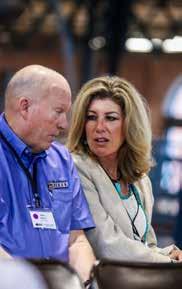



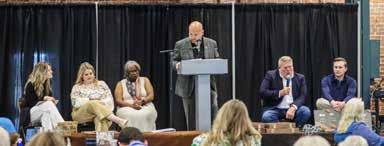






Recognition award was presented to Sara Benson of Merck Animal Health.
Throughout IBA Annual Meetings, there are always a few special guests. Here are a few that attended this year:
• Director of the Illinois Department of Agriculture, Jerry Costello
• Deputy Director, Illinois Department of Agriculture, Kristi Jones
• Chief of Staff, Illinois Department of Agriculture, Jeremy Flynn
• IBA Lobbyist, Liz Brown-Reeves,
• IBA Lobbyist, Kristin Rubbelke,
• IL FFA State Reporter, Sidney Stiers
• Miss Illinois County Fair Queen, Johnna Fulcher Finally, the most celebrated members of the year, our 2025 award winners. Turn to later pages of this publication for profiles on two of this years winners, and the next two issues will include the rest of the members. Plus, make sure to visit our YouTube page to watch their videos.
2025 IBA Award Winners:
• Outstanding Junior of the Year - Emma Taylor, Murrayville
To recognize a member of the Illinois Junior Beef Association who exemplifies integrity, leadership and commitment to being active in Illinois’ beef cattle industry.
• IBA Member of the Year - Joan Harrison, Minier
To recognize a member of the Illinois Beef Association that continually goes above and beyond to support the efforts of the Association, and demonstrates a commitment to the Illinois cattle industry, and its people.
• Environmental Steward of the Year - Hanson Land & Cattle, Danforth
To recognize a beef producer in Illinois whose natural resource stewardship practices protect the environment and contribute to productivity and profitability.
• Commercial Producer of the Year - Lidy Family Farms, Mulberry Grove
To recognize a beef producer in Illinois who exemplifies integrity, leadership and success in the production and promotion of the commercial cattle industry.
• Seedstock Breeder of the Year - Horsley Brothers, Galva
To recognize a beef producer in Illinois who exemplifies integrity, leadership and success in the production and promotion of the purebred cattle industry.
• Farm Family of the Year - The Hugh Moore, Jr. Family of Moore Shorthorns, Jerseyville
To recognize a beef producer family in Illinois who has done an outstanding job in the production and promotion of beef and exemplified leadership skills on the county and state level.




Hanson Land & Cattle
Isabella, Lisa & Doug Hanson, Maddie & Joe Buckley



Lidy Family Farms
Alice, Morgan, Matt, Dave & Anita Lidy







Honorable mentions(those who met, or exceeded prior year percentage, reaching 100% or more): Central Illinois Livestock Association, DeKalb Kane County Cattlemen's Association, McLean County Beef Association, Southwest Illinois Cattlemen's Association, Union County Cattlemen's Association, and Woodford Beef Association

Membership Recognition Award Winner
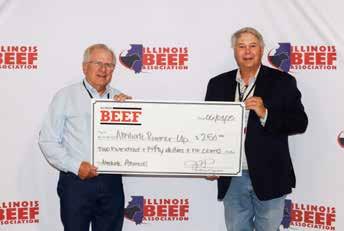
Membership Recognition Runner-Up
Marshall-Putnam-Stark Beef Association, received by Buzz Iliff

Recruitment Award Winner

Affiliate Recruitment Runner-Up
Daviess County,
Membership Based Affiliate awards are new to recognize the work of affiliates done for membership recruitment, retention, and renewal.
Membership Recognition Award - Recognizes the affiliate that has the highest renewal/recruitment percentage of producer membership.
Affiliate Recruitment Award - Recognizes the affiliate that has recruited the greatest number of new producer members.




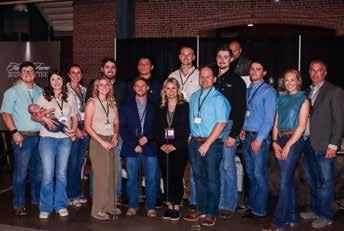
Class of 2024-2025 Beef Leadership Academy participants Ben and Sara Trygar, Rebecca Walker, Bailey Rogers, Blake Rinckenberger, Joe Buckley, Andres Olalde, Maddie Buckley, Cody Hadden, Jason Bedwell, Jake Hlas, Blake Webel. Presented by Annie Schoetmer and Shannon Welsh.




family beef cattle operation in Warren County has earned the bragging rights as Illinois' top beef producers after their steer entry won the 2025 Illinois Beef Quality Showcase contest. Robinson Beef claimed the Top Steer Overall title this year, with a black steer that gained 5.33 pounds daily to produce a prime beef carcass of 952 pounds. The steer, entered by Adam Robinson and his father-in-law Marc Hanson, started the contest at 710 pounds, consuming an average of 26 pounds of feed each day throughout the duration of the program.
The second place steer overall was entered by The Walter Group and Jarad Carroll from Jo Daviess County. This steer also graded prime, with a carcass weight of 965 pounds. The entry consumed an average of 26.1 pounds of feed each day, gaining 5.3 pounds overall each day.
Third place overall was awarded to a steer entered by Rick and Derek Dean from McLean County. This steer also received the top award for on-the-rail performance, meaning that it generated the highest performance of beef product on the carcass. The 1,099 pound carcass of this animal graded into the Certified Angus Beef program, with a total value of $4,065 in beef production.


A steer entered by O'Hern Stock Farm in Fulton County finished fourth overall in the IBQS program. This animal weighed 865 pound entering the program last fall, gaining an average of 5.28 pounds per day to finish at 1,705 pounds. The carcass of this animal graded choice, weighing 1085 pounds.
Fifth place overall was awarded to a second entry from Robinson Beef in Warren County, entered by Adam's father, Ed Robinson. This steer started the contest at 905 pounds, gaining 4.97 pounds per day to finish a 1,048 pound choicegrade carcass.
The contest's top performing steer in the on-feed division was entered by Bradley and Kimberly Wolter with Windy Hill Meadows of Clinton County. Their choice-graded carcass yielded 944 pounds from a live weight of 1,508 pounds. The steer started the program at 744 pounds, with a feed-to-gain ratio of 4.7 pounds of feed for every one pound of beef, which is performing well above industry standards.
The cattle feeding competition included 175-days of onfeed data collection under the supervision of the University of Illinois' beef program at Urbana. Twenty-five head of cattle entered in the inaugural contest presented by the Illinois Beef Association, in a program that began in November of 2024
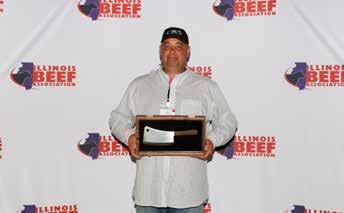
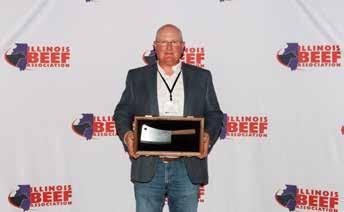




Making the most of 80 acres in Illinois.
Central Illinois has long been defined by its rich black soil and expansive flatlands — landscapes that make it ideal for high-yield grain production. But with cattle prices at an all-time high and continuing to climb, many farmers are at a crossroads. Grain has long dominated the region’s agricultural economy, but shifting markets and rising livestock values have sparked a new question for landowners, renters, and next-generation producers alike: Should I utilize my 80 acres for grain farming or as a cattle operation?
The answer depends on what fits your goals and land the best. Factors to consider include financial risk, lifestyle preferences, and how each producer defines long-term success.
The traditional corn-soybean rotation remains the bread and butter of most Illinois farms. With average corn yields near 200 bushels per acre and recent commodity prices hovering around $4.50 per bushel, the gross revenue on 80 acres of corn might reach $80,000. However, profitability is squeezed by rising input costs.
Input costs for corn, including seed, fertilizer, herbicide and machinery can easily run around $900 per acre as summarized in recent outreach materials from Iowa State University Extension. These tight margins leave little room for potential losses.
Farmers often rely on crop insurance and marketing tools to manage price risk. Yet according to Mary Kurzweil, a livestock analyst with CattleFax, export instability is weighing heavily.
“One risk grain producers are facing now is a drop in corn exports, especially to countries like China,” she says. “There’s not a lot of optimism in corn outlooks, and that uncertainty affects decision-making.”
Meanwhile, cow-calf production is gaining attention. A well-managed 80-acre operation might comprise 65 acres of rotational pasture, 10 acres of hay and up to five acres of handling facilities including working chutes, holding and crowding pens, and more. With current calf prices ranging from around $1,200 to $1,500 per head, gross income can rival or exceed grain on a per-acre basis, particularly for existing cattle operations and improved margins.
“They were near break-even not long ago, and now they’re very positive and expected to stay that way for at least a few more years,” Kurzweil says.
This surge is driven by tight supplies and resilient demand. The drought in Texas and other key cow-calf
regions has reduced the national herd. At the same time, demand for both domestic and exported beef is holding strong.
Still, getting into cattle requires capital. Heifer and bred cow prices are high, as are interest rates. The cost of borrowing makes getting into the cattle business risky, especially since you are waiting a year or more to see any return, Kurzweil says.

Nik Jakobs, a cattle producer in Sterling, Illinois, knows risk well. “It’s not how much you receive for your cattle, it’s more important how much it costs to replace them,” he says. Right now, replacement costs are remarkably high, ranging from as much as 100 percent more than just five years ago.
Even so, Jakobs values the flexibility of having cattle and crops. “There’s a symbiotic relationship,” he says. “Cattle produce manure, which builds our soil’s water-holding capacity and resilience. And instead of trucking grain offfarm, we walk it off through our cattle.”
One of the biggest differences when comparing grain farming and cattle raising is the daily commitment livestock requires. Grain farming is seasonal; it is intensive during planting and harvest, but with more flexibility the rest of the year.
In contrast, a cow-calf operation runs on a 365-day clock.
“There’s no skipping out in March or December,” Jakobs says. “Cows don’t wait on your schedule. You’re calving or feeding no matter what the weather looks like.”
That constant attention is not for everyone. But for many cattle producers, it is not a burden — it is a lifestyle. “All of our kids spend time on the farm,” Jakobs says. “We bring them around all the time because we want them to love this farm as much as we do. If we are not bringing them around, why are we doing it?”
Still, labor is a finite resource, especially as farm families stretch to manage multiple enterprises or off-farm jobs. One kind of landowner might find the autonomy of grain farming more appealing. For others, the hands-on nature of cattle raising gives purpose, and builds legacy.
By Katelyn Engel, Agricultural Communications student, University of Illinois
Experts agree that both systems carry risk. Grain farming is vulnerable to global market shocks and climate extremes. Cattle operations face disease, price fluctuations, and high input costs. But both now have tools to help producers navigate uncertainty.
“USDA has added more tools for cattle producers,” says CattleFax’s Kurzweil. “Livestock Risk Protection is a big one that helps producers lock in prices. There’s also drought insurance, which is becoming more important even in the Midwest.”
Land use adds another layer of complexity. According to Dr. Lee Schulz in the Ag Decision Maker Newsletter, “on-farm land use decisions involve trade-offs.” If a producer uses land for hay or pasture, they forgo potential income from row crops. Opportunity cost plays a pivotal role in choosing how best to allocate limited land resources.
The publication also emphasizes the role of preferences in land-use choices. “Some people really like seeing cows on pasture and realizing the environmental benefits of grazing cattle,” Schulz writes.
For producer Jakobs, success lies in diversity. “Some years cattle margins are tight. Other years, grain is underwater. But rarely are both bad at the same time. That’s the power of diversification.” And Illinois is one of the unique places where diversifying is possible.
Environmental sustainability is also becoming a bigger factor. Practices like rotational grazing, manure application and cover cropping can make livestock and crop systems mutually beneficial. Kurzweil believes those synergies will matter more in the future. “There’s growing interest in sustainability metrics,” she says. “Some buyers are already paying premiums for cattle raised under specific environmental protocols.”
Ultimately, the question is not just about land use, but also about values. What does success look like for producers? Is it yield per acre, or time spent with family? Is it flexibility or predictability?
“Right now, if you already have cattle, you’re in a strong position,” Kurzweil says. “Even if you’re just getting in, the next couple years could still offer strong returns if you manage your risk and costs.”
Jakobs sums it up more personally: “We’re not just raising calves; we’re raising the next generation. This isn’t just about income. It’s about identity.”
In central Illinois, where every acre has value and every season carries risk, there may be no one-size-fits-all answer. But for those willing to think beyond tradition, and invest in what matters most, the land may be more versatile than ever imagined.

Managing grazing lands effectively can keep pastures productive for generations to come. Cattle producers are always looking for ways to improve their management practices to maximize grass production for their cattle. Whether producers are just getting started or are already implementing grazing strategies, here are three simple ideas to help guide land management decisions.
Developing a written grazing management plan (GMP) helps inventory resources and provides a roadmap to improved pasture management. It is a resource that can optimize productivity of the land through implementation of cost-effective practices supporting forage growth and quality, cattle productivity and improved environmental factors. It can help to further the farm or ranch’s resilience and increase the efficiency of the operation. Having a GMP is essential to the success, longevity and profitability of operations.
Grazing Management Plans Serve to:
• Enrich grazing lands’ conditions
• Maximize water resources
• Improve soil condition and forage quality
• Optimize cattle grazing and pasture utilization
• Enhance wildlife habitat
• Identify risk factors and implement response actions
While many producers have a grazing plan in their heads, it is important to develop a written plan to effectively track successes, make changes and transfer knowledge.
“When you sit down and put a plan on paper it makes you rethink things and opens discussions with other people, so don’t be afraid to change,” said Suzanne Schuchart with Running V Ranch in Jourdanton, Texas.
Producers don’t have to design a plan on their own; help is available. Technical advisors with groups such as grazing lands coalitions, state cattlemen’s associations, university extension and USDA-NRCS are available to support knowledge-based decisions for producers. With expert assistance, the grazing management decisions made today can have a lasting impact on the success of the operation.
New technologies including software platforms and precision data tools are available to help producers manage resources and make informed and efficient
choices. Advanced analytics and precision tools allow farmers and ranchers to track and identify which practices yield the best results. Tracking data and keeping accurate records such as rainfall, cattle movement and forage amount, helps form the business case for decision making at the ranch level for the future.
“It is really about trying to create efficiencies,” said James Rogers with Northway Ranch Services in Twin Falls, Idaho. “We have limited time and money, and collecting data in real time helps us make better decisions.”
Another benefit of utilizing data management technology is transferring knowledge to the next generation. A critical aspect of transitioning operations successfully is ensuring that those next in line have the time-tested knowledge of what does and does not work for the operation. Technology lends a helping hand by creating a recorded account of information that aids decision making. This ensures the next generation has historical knowledge that can sometimes be lost during the transition.
Incorporating technology is also appealing to the tech-savvy mindset of younger individuals. Utilizing new technology may help encourage them to stay in agriculture.
“There is so much advancement in technology that it provides an entry point for young people to come back and leverage their skill set and what they’ve learned, which can catapult their operation even further,” Rogers explained.

Cattle producers respect one another’s opinions and value their experiences, whether successful or not. Networking with neighbors and peers allows other cattlemen and women to learn what techniques worked well in different regions. Additionally, continuing education is key to the future of beef production. There are a variety of in-person and virtual workshops at the state, regional and national levels that feature grazing management strategies.
“There are two things that motivate me: the relationship of people to people and the relationship of people to the land,” said Chad Ellis, CEO of Texas Agricultural Land Trust. “Grazing management workshops help us engage so we can be better tomorrow than we are today.”
Find grazing-related tours, workshops and other educational events through NCBA, state cattlemen’s associations, extension offices and other organizations.
Implementing grazing strategies that benefit operations now and, in the future, doesn’t have to be difficult. Get started today by using the Grazing Management Workbook at ncba.org. This template serves to provide a starting point in developing a personalized grazing management plan that benefits the goals of individual operations.

Doug Hanson, a cattle and grain farmer in Danforth, likes to say that he’s in the business of solving problems. It’s how the 2025 Illinois Beef Association Environmental Stewardship award winner sees his family’s systematic approach to raising cattle and grain in a way that is efficient for their bottom line, good for the soil and beneficial to the livestock. A former agriculture teacher, Doug and his family’s home base is 80 acres of land where his wife Lisa grew up. However, the farm has been part of Doug’s life since the sixth grade, when he and his sister began buying cattle from Lisa’s father.
For a while, Doug and Lisa, both teachers, lived in Monroe County where they had cattle on three different farms. They worked with Lisa’s father, taking bulls back and forth between Monroe and Iroquois County. However, when their daughter Maddie was born, the couple decided that it was time to return to where it all began.
“We thought it was important to come back to where family was,” Doug explains.
Doug and Lisa’s daughters Maddie and Isabella are fifth generation beef producerss. Doug credits his parents for the family’s involvement in grain farming, and Lisa’s parents for the land to have the cattle like they do today.
“I remind Maddie often that we would have none of this if it weren’t for her grandparents,” Doug says.
Maddie’s grandparents are a core part of her memories of
growing up on the farm. She is now an integral part of the family business at Hanson Land and Cattle, but the farm has always been part of her life and her childhood was filled with memories of working with the family and spending time with her grandparents.
“I remember we'd finish up working and grandma would have some lemonade and we'd sit on the swing,” Maddie recalls. “And we would just enjoy it. That was always our summer thing. From the time I can remember, I've helped my dad with moving fences, doing all the rotational grazing, moving cows, sorting calves and putting ear tags in.”
Maddie’s love of cattle started like most young people’s passion – in the showring.
“That was always something that my dad and I loved to do,” Maddie says of showing cattle. “That was where we spent all of our time, and it was truly just so much fun. And now we also get to raise show cattle. So not only do we get to do that together, but we also get to kind of, in a way give back. We get to then help other young 4H or FFA kids get started and find their love for showing cattle.”
Maddie leads the retail side of the operation, with customers from neighboring counties and as far as Chicago. Their customers appreciate the transparency of their operation and the knowledge that the meat they purchase has been thoughtfully raised by the Hanson family.
“A lot of our customers love knowing that the beef is solely coming from Hanson Land and Cattle,” Maddie says. “They like knowing the cattle are on pastures. They like seeing like

Environmental Steward of the Year winners, Hanson Land and Cattle, take a solutions-focused approach to sustainability.
By Sara McClendon


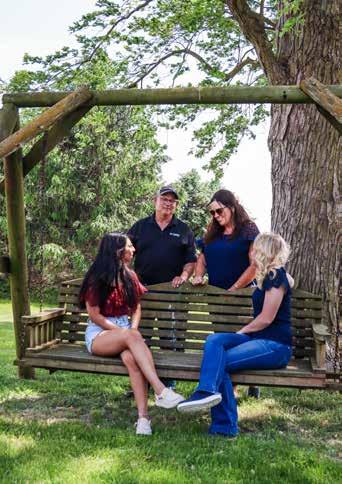


the pictures on Facebook. They like the little baby calves out in the pasture.”
Maddie’s drive to share her love of agriculture comes from her father.
“He was the one always pushing me to do contests, pushing me to just get involved and just be the best person that I can be,” Maddie says. “He encouraged me to just go out and have fun, work hard and promote the beef and ag business.”
Sharing passion and knowledge is something Doug continues to this day on his operation and in job with Pro Harvest Seeds where for two decades he has worked with producers to find the right system for their operation that keeps the environment and their bottom line in mind.
Lisa’s family’s farm was mostly a grain farm, aside from about 8 acres. About 20 years ago, the family went through the USDA’s Environmental Quality Incentives Program (EQIP) and installed 22,000 feet of fence. The operation features 16 paddocks, all with water.
There is also a winter-feeding station, which is similar to a large pavilion, that allows the cows to come up and eat in the wintertime. It provides several benefits to the operation. In addition to providing a place for cattle to eat when it is too wet to graze, it also allows for the collection of manure to use in the grain operation which provides positive benefits to the nutrient management program of the corn, soybean and wheat fields. Plus, it helps mitigate disease risk by having cattle graze over top of where manure was applied.
As far back as Doug’s high school days, he’s been concerned with environmental stewardship in agriculture. He recalls a FFA speech about T by 2000, the Illinois Erosion and Sediment Control law focused on soil health. During his time as an educator and then in his job with Pro Harvest Seeds, that interest has expanded into an educational platform for other livestock producers in the state.
The guiding principle of the Hanson Land and Cattle is looking beyond just the property line to develop mutually beneficial systems. One such system is the use of cover crops.
Twenty years ago, Doug began putting on programs for producers about pasture management. Five years in, the discussion began to incorporate cover crops as a feed. The interest in this management practice caught on fast.
“All of a sudden corn, soybean producers started showing up,” Doug says, “They would sit through cattle information just to get cover crop information.”
Eventually, they began splitting out parts of the program dedicated to all the benefits of cover crops as feed for livestock producers and soil health for corn and soybean growers. Most of the sustainable practices that Doug shares with producers started on his own farm.
“What we learned, actually on this farm for the most part, and through going to a lot of events and a lot of other farms, is that if a cover crop is good for the soil, then it's good for the animal,” Doug explains. “And anything that's good for the animal is good for the soil usually. That's a simultaneous benefit.”
With proof of a solution on his own farm, Doug was able work with producers to develop programs and systems for their own operations to take advantage of these mutual that



benefits. As the practice continued to gain momentum, Doug’s message expanded and he realized the full potential of sharing this sustainability practice with producers.
One major moment in this journey came when Doug had the opportunity to speak at a meeting for the National Cover Crop Foundation. He was one of four speakers chosen for the occasion. A cover crop expert from Colorado stuck around to hear about his program because he was so intrigued by its success.
“That was actually a turning point that made me realize that there is a demand,” Doug says. “I already had that education background and I was already putting on forage programs, but it showed me that there are people who could really benefit from having livestock tied in with cover crops that weren't considering it.”
While cover crops are a no-brainer for Doug, with a lifelong experience in the cattle industry, he knows that producers need to find the system that works best for their unique operation.
“It’s not whether cover crops are right or wrong, it's what problems are we trying to solve?” Doug explains. “In order for cover crops be successful, you have to get the system that works best for your farm.”
Cover crops are an important part of the Hanson Land and Cattle system, but it goes beyond any single sustainability practice. Doug says the key is to understand and plan in advance for solutions to what nature might throw your way.
Doug says, "in this part of the world, you might get too much rain and then not enough, and all in the same month. I have learned that you just have to be prepared for that.”
The family is also realistic about their goals for growth. They understand that just because they want to continue to expand doesn’t always mean the operation is ready for that. However, just as the family farm has transformed over Doug and Lisa’s life, the business continues to adapt.
One positive growth for the family farm was when Maddie’s husband Joseph quickly became a major part of the operation.
“Joe’s job is to identify when we take an animal from 500 pounds or 800 pounds, how we can do it most efficiently,” Doug says.
Joseph grew up on a row crop operation, then in college worked at an internship in DeKalb County for a custom feeder. This insight has helped the business grow, especially as the family continues to expand the retail portion of its operation.
“I brought the ability to see the finished side of cattle,” Joseph says. “I've brought back a lot of the treatment side of things. Noticing what to do for cattle and the kind of care that is required.”
As the business continues to grow, adapt and change, one thing has stayed the same since the time Doug would visit as a kid: Family works together to get the job done.
“It's truly a family business,” Doug says. “And, boy, that's the ag world. It always has been. I think that's why there's so much passion in this.”



Outstanding Junior of the Year, Emma Taylor, believes community is the core of the cattle industry.
By Olivia Hoots
Murrayville, Illinois, is known for its delicious ice cream and the memory of a local grocery store that has begun to fade into the memories of the community it served. It is a tight knit community, one you read about in books where folks all wave in their cars as others pass them by. The farms surrounding the town have that same feeling of nostalgia and joy and a home cooked meal.
One farm to the North also feels like the definition of comfort, and is the home of Emma Taylor, the 2025 Illinois Beef Association Junior Member of the Year. In talking with Emma any number of people would feel delighted. Her smile radiates and speaks kindness to those around her. That same tone is evident in the humbleness with which she talks about her many accomplishments in the beef industry as a junior.
At just five years old Emma’s dad helped her enter the

show cattle world. Before that she would follow her dad around on the farm and always love the cattle part of it.
Just like every other farm kid she joined 4-H at the age of eight, and they decided on a steer to show that year.
“Since it was my first year I decided I was just going to have fun,” Emma says. But she took home Reserve Champion Simmental that year, a memory she will not soon forget.
When Emma’s parents got married they started a small feeder herd, but when they had kids her dad knew it was time for some breeding stock.
“He always had the feeling I would want to show,” Emma says. “And he was right, because this is my life and I do not know where I would be without it.” Plus, it is something he wanted since he was a kid too, and seeing his kids show has been a joy for him to watch – he is Emma’s role model.
Emma is the oldest of four girls; the “Taylor Girls” is what they call themselves – one is 16 and the other two are twins,

age 9. Emma says it is enjoyable going to shows as a “team” with her sisters.
She says they are learning things alongside her, and from her. “They are getting more experience and learning more things younger than I was whenever I was their age.”
Emma has taught her sisters the importance of having priorities. Her dad always told her “you get out of it what you put into it,” she says. “I stand by that.”
Emma has proved the essentiality of family support and hard work tangibly. A few of her most favorite memories show it.
A few years back she had a Herford steer that won Reserve Grand Champion at the Morgan County Fair. And her favorite part of that day? Seeing her dad stand ringside in support. Seeing her get the slap made him extremely proud, as any parent might imagine.
In 2023, the Morgan County Fair awarded it’s first ever Chris “Crusty” Smith Herdsman Award, after he has passed away from cancer. They were looking for cleanly people with positive attitudes, someone to embody a memory of Crusty.
One day during the fair Emma had just walked out and still had her steers in her hand when they decided it was time to announce the winner of the Herdsman Award. “I was trying to listen, everyone was standing around, it was crowded,” Emma says. “A guy came up to me and told me to ‘get up here.’” Winning that award meant the world to her.
“[Crusty] was a great guy, was really involved in the Shorthorn breed and in the beef community,” Emma says. She had worked on some of his calves before, breaking them for sales and such. “Getting that first year award really hit hard… I wish he was still here.”
Another memory that displays Emma’s character was when she showed against her cousin. She simply said “good luck out there.”

Her cousin did beat her, but Emma, she was not affected, it is all about the moment for her. “We all go compete against each other and come back out, give each other a high five and congratulate one another.”
She hopes her sisters have the same attitude as they continue to show, a smile on their face and determination on their mind. “I hope they always have a fun time and just remember there is always another event,” Emma says.
At a young age, Emma was a bit more shy than she is now. Today, she would tell any junior to get out of their comfort zone and do something that seems difficult. “I used to be that kid that did not want to go anywhere without my parents,” Emma says. “I have come out of my comfort zone, it has helped me to be involved in things.”
One way Emma’s journey has evolved is through her participation in livestock judging in High School, and then she judged in junior college at John Wood Community College. She loves traveling, seeing the U.S. and livestock judging all over the country, plus spending time with her teammates.
“I have learned a lot, and it has helped with my public speaking skills,” she says. She also enjoys seeing the various operations producers have around the country, and then telling her family all about what she has seen.
During her freshman year at JWCC, they traveled to Denver for the National Western Stock Show. Her judge surprised her and chose her as part of the carload contest team.
After participating and hearing the answers, she realized she had only dropped 11 points. “If you are lucky, you might be in top ten,” her coach, Justin, said. But no, she won the carload contest.
“I was confused for a second. ‘Did I really just do this?’ I asked myself,” Emma says. “I was simply thankful and did not

know how to react.
Emma will attend Iowa State University this fall to continue her bachelor's degree pursuit. She hopes to be involved with the Women’s Ag Club while she is there.
This year, Emma’s big accomplishment was being awarded the 2025 IBA Outstanding Junior of the Year. When she was told she won the award, goosebumps appeared on her arms. “It makes you realize people are actually watching you,” Emma says. She sees now that those around us see the work we are doing.
She has enjoyed being on the Illinois Junior Beef


Association Board of Directors and helping at junior events such as the Illinois Beef Expo or EDGE Conference, and events at the Illinois State Fair. “I always said to myself, ‘I want to be the person who takes a role and leads kids to show them what the beef industry is,’” Emma says. “I have been proud of myself for stepping out of my comfort zone to be an IJBA Board member.
For Emma, being involved is about meeting others, and to have open doors you can walk through. “I definitely recommend getting involved in things because you never know what you will end up doing,” Emma says.
She credits livestock judging, IJBA and other agriculture involvements for the opportunity in front of her.


IJBA Jackpot Show at Illinois State Fairgrounds.
Stay tuned to the IBA Website and social media for more details for questions, contact Devin BOllman devin@illinoisbeef.com | (217) 787-4280



A. Exhibitors must be over 8 and under 22 years of age as of January 1, 2025.
B. All animals must have health papers from a veterinarian.
C. All entries must be registered in the name of the exhibitor, who must show the heifer, unless other arrangements have been made with IJBA Jackpot Show staff.
D. This is an IJBA Points Sanctioned Show.
HEIFERS AND COW/CALF PAIRS
A. Registration papers are required.
B. Registered heifers will be shown by age, youngest to oldest.
C. Heifer and cow/calf classes will be offered for any breed that has at least five head. Registered females with less than five head per breed will show in AOB.
A. All entries will be made online through the ShoWorks platform at https://ijbajs.fairwire.com/ or through the link on the IBA website, www.illinoisbeef.com. Online entries are due Friday, August 1, 2025, at 11:59 p.m. at the rate of $25 for each heifer and/or cow-calf pair. Late virtual entries will be accepted until Tuesday, August 5, 2025, at 3:00 p.m. at the rate of $45 for each heifer and/or cow-calf pair.
B. All questions can be directed to the Devin Bollman by calling 217-787-4280 or by emailing devin@illinoisbeef.com.
C. All exhibitors must be IJBA members
D. Entry fees are non-refundable
A. All the non-Illinois State Fair cattle brought onto the fairgrounds for the Jackpot Show should be stalled in the Junior Livestock Building
B. All heifers and cow/calf pairs not showing at the ISF should arrive on the grounds some time during Saturday, August 9.
C. When your breed show is completed, you are released
A. All of the entry fees will be redistributed.
A. Posted in the Junior Livestock Building Saturday, August 9, by noon.

busy summer of programs and events kicked off on May 28, with the third-annual Junior Beef Tour. Eleven passionate Illinois Junior Beef Association members had the unique opportunity to explore various careers within the beef industry over a two-day tour across Southern Illinois.
The tour kicked off at United Producers in Shelbyville, where a sale is held each Tuesday. Juniors got to chat with Steve Pieper, Jessie Ahrens and Andy Pinnick.
The next stop was Hartke Farms where the Hartke family raises crops, feeds hogs and finishes cattle in a monoslope facility. Here, juniors learned from seasoned farmer David Hartke and his sons, Alex and Dustin.
Juniors also got to visit The Equity Farm & Home Store, a leader in agricultural services in South-Central Illinois. They have more than just a store, and also provide customers with feed and livestock services, energy and more.
Next, the tour took juniors to Windy Hill Meadows, the operation of Bradley and Kimberly Wolters. The family has used a balanced approach to breeding and raising methods in order to carve a unique path in beef production. Their daughter, Lauren, first presented attendees with a meat demonstration and then Bradley showed the juniors out to the field for a more in-depth look at their practices.
A unique stop was next at the St. Louis International Airport Livestock Export Facility. STL has one of the few USDA Certified livestock export air facilities. In 2024 they completed renovations that allow for a higher-volume of export loads. It was an awesome opportunity for juniors to learn about beef exports.
The final stop of the trip was Fritz Meat & Processing in Jerseyville. Co-owner, Adam Fritz, showed juniors around the facility and showed juniors how they provide their community consumer-ready products.
These two full days offered eleven high-quality Illinois Beef Juniors a first-hand look into the many career opportunities that exist right here in Illinois.






















Despite inflationary challenges, consumers continue to demand beef. At the grocery store, shoppers choose beef for its taste, versatility and nutritional value. The industry has worked tirelessly over the last four decades to improve quality and eating experience, however, a hidden hazard has the potential to derail those efforts. Foreign objects, such as buckshot, birdshot, needles and darts are found embedded in muscles during processing at alarming rates, and some of those items are making it all the way to the meat case in retail outlets.
According to the most recent Beef Checkoff-funded National Beef Quality Audit (NBQA), all plants surveyed reported finding foreign objects during the harvest and fabrication of market cows and bulls, and a majority of surveyed plants (53.3%) reported instances of their customers finding foreign objects in their products. While plants have installed metal detectors and x-rays to help prevent foreign object contamination, it remains a problem throughout the beef supply chain. And, the problem isn’t only reserved for market cows and bulls, but for fed cattle as well. Foreign objects originate during production phases, beginning at the farm and ranch level.
In the early 80s, little focus was placed on quality and beef demand was cut in half between 1980 and 1997. Findings from the first NBQA in 1991 helped the industry shift from a supply-driven market to a demanddriven market and in 2024 beef had its strongest demand in 37 years, according to Patrick Linnell, analyst at CattleFax.
“Our industry has made improvements for generations to bring the best product to our customers,” said Dr. Trey Patterson, CEO of Padlock Ranch. “We’ve demonstrated resilience by persevering through the pandemic and other challenges, but we can’t rest on past successes.”
Per the USDA’s Food Safety and Inspection Service, beef containing foreign materials, regardless of size or physical characteristics, is considered adulterated and must be pulled from the human food supply chain.
“We don’t want to dispose of high value product due to foreign material contamination,” said Linnell.
Over 50% of U.S. beef consumption is ground beef and CattleFax estimates that a record $58.2 billion was spent on ground beef in 2024. Foreign objects wreak havoc on grinding operations and can negatively impact
the profitability of supply chain partners from pasture to plate.
To understand the breadth of the problem, if more than one BB is identified in beef trimmings, the combo bin (2,000 pounds) of trim, and those produced before and after, are considered contaminated for a total of 12,000 pounds of trim. On average, today’s carcasses weigh 940 pounds, with 25% or around 235 pounds of the yield going to beef trimmings. To fill a 2,000-pound combo bin, source material is combined from typically nine or more head, meaning that a single carcass could jeopardize 12,000 pounds of beef trimmings. Thus, for every head contaminated with foreign material (like a BB), trimmings from 51 non-contaminated head are at stake of never making it to the consumer.
“Food safety is non-negotiable; it is an expectation of our customers,” said Patterson. “Consumers also deeply care for how cattle are handled, and it is our responsibility as producers to continue providing the product they demand.”
While the newest technology, including x-ray machines and metal detectors, is helping find foreign objects in processing facilities, they are not 100% failsafe. Foreign material contamination in the live animal needs to be identified and ultimately prevented in the pre-harvest sector. Recent Checkoff-funded research conducted by West Texas A&M University is looking for ways to identify foreign materials in live animals.
“Our goal is to understand the efficacy of different devices to identify foreign objects in live animals and then determine how we can implement these systems,” said Dr. Trent Schwartz, PhD, with West Texas A&M University. “We hope to create one more way to check animals for foreign objects before they enter the packing house.”
Foreign objects in beef cause inefficiencies throughout the supply chain, which ultimately leads back to hurting the product’s value and creates a consumer perception problem that can erode demand. Reducing foreign objects in beef ultimately comes down to producers changing handling practices.
“We are professionals and are the best in the business at what we do; we as an industry must fix this problem before animals get to the packing plant,” Patterson concluded. “If you can’t manage cattle without shooting them, then you have no business being in the industry.”


State and National Beef Promotion and Research Programs Information is required by 7 CRF 1260.201. Failure to report can result in a fine. Information is held confidential per 7 CRF 1260.203.
Today’s Date ID Number (if known)________________________
Seller’s Name
Address
Seller’s Signature
Buyer ’s Name
Buyer ’s Signature
Both the seller & the buyer are responsible for making sure that the $1.50 per head assessment is collected and remitted to the Illinois Beef Association.
Date of Sale
Total Number of Cattle Sold: X
*State of Origin
$1.00 per Head Federal Checko = Total Checko Payment for Federal and State
$0.50 per Head State Checko =
Person remitting form : Seller Buyer Phone Number:
*If the cattle purchased came from another state within the last 30 days, indicate from which state the cattle were purchased.
Send Report and Remittance to: Illinois Beef Association PO Box 19214
For additional information: call 217- 787- 4280or email olivia@illinoisbeef.com
The Illinois Beef Association (IBA) collects the Illinois Beef Checko in accordance with the Illinois Beef Market Development Act. IBA also collects the national beef checko ful lling its role as the Quali ed State Beef Council for Illinois as designated by the Cattlemen’s Beef Board.
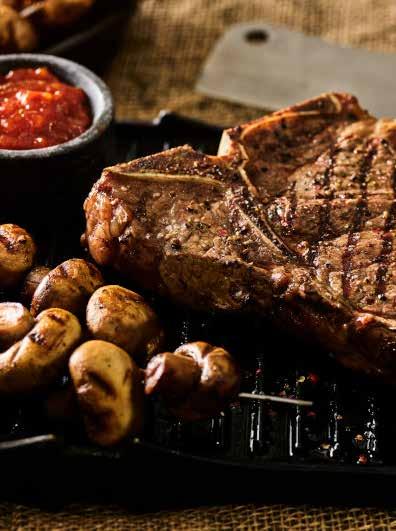







BEEF EATERS CLUB WINNERS
(CONSUMERS SENT IN RECEIPTS TO BE ENTERED IN A DRAWING)



1. Enjoy a juicy brisket sandwich and cowboy potatoes at the Ribeye Corral!
2. Join your fellow IJBA members at the annual IJBA meeting on August 5!
2. Visit the FFA petting zoo to meet all the animals!
3. Watch the IJBA Jackpot Show in the Junior Livestock ring on Sunday, AUgust 10, at NOON!


How to make the most of BEEF at the 2025 Illinois State Fair.


4. Go see your favorite breed in the livestock center during the open beef show!
5. Throw on a Beef. It's What's for dinner. shirt and come volunteer to serve beef at Ribeye Corral!
6. Come to the Governor's Sale of Champions and see how much the Champion Steer brings!
7. Try Local Beef Samples at the GFI Grain Bin and show your support for Beef!




2025

President: Carla Jurgenson
Vice President: David Mool
Secretary: Clay Sellmeyer
Business Manager: Doug Turner
Past President: David Jenkins
Bureau County: Vaughn Kiner
Central Illinois: Luke Lemenager
Logan County : Carla Jurgenson
Northern Illinois: Jarad Carroll
South Central: Richard Hurst
Wabash Valley: Shaye Harre
Directors at Large:
Sam Brumleve
Brent Hinkle
T.J. Curtin
Brian Hutchins
Kyle Buetke
Jeff Dameron
Chris Cassady
Clay Sellmeyer
Dan Naughton
Eric McClure
David Mool
Bodee Schlipf
Brad Evans
Tracey Rawlings
To place advertisements or your latest Angus news contact: Olivia Hoots Illinois Beef Editor
olivia@illinoisbeef.com www.illinoisbeef.com
Photo by Cindy's Livestock Photos of Ashton Dillow, recipient of the
at the
The Central Illinois Angus Preview Show held in Bloomington this past June not only kicked off the summer show schedule for many but also served as the first ROV show of the new season. Roughly 90 head were exhibited during the three day event as juniors and Angus enthusiast's alike gathered from around the state including multiple out-of-state exhibitors to have their animals evaluated. We would like to extend a thank you to the Central Illinois group for hosting and for their continued financial support for all Illinois juniors that were able to participate. Best of luck as many will continue showcasing your projects in July at the National junior Angus Show in Tulsa, Oklahoma.
This year's Illinois State Fair will run from August 7 thru August 17 with the junior Angus show on Friday, August 8, market animals on Saturday, August 9, followed up with the open Angus show held on Monday, August 11. The deadline for entries to participate in this year's fair is on or before Tuesday, July 15. Entries must be submitted and paid for in full through the online fair entry system found on the Illinois State Fair website.
Some additional upcoming events we would like everyone to be aware of include the Illinois Angus Fall Female Sale to be held at Fairview Sale Barn again this year on Saturday, December 6, 2025. We would like to have consignments collected for this event by October 1. The Annual Meeting/banquet of the Illinois Angus Association will be held once again in conjunction with the Illinois Beef Expo on Friday, February 20, 2026, in the Illinois Building on the Illinois State Fairgrounds. We will continue to provide details on our website and Facebook page for these and other events as they approach. Thanks for following along and have a safe enjoyable summer.
dmool@icloud.com | (309) 275-0614
Ben Sellmeyer, Maroa, has earned the National Junior Angus Association’s Bronze award.

Ben Sellmeyer, Maroa, has earned the National Junior Angus Association’s Bronze award, according to Caitlyn Brandt, events and junior activities director of the American Angus Association® in Saint Joseph, Missouri.
Sellmeyer is the 17-year-old son of Clay and Katie Sellmeyer and attends Warrensburg-Latham High School. He is a member of the NJAA and the Illinois Junior Angus Association, where he has served as director.
He has participated in local, state, regional and national shows and showmanship contests. At the National Junior Angus Show, Sellmeyer participated in the quiz bowl contest and the AllAmerican Certified Angus Beef® Cook-Off. He also participated in the 2018 mentoring program and served as a voting delegate in 2024. In 2023 he participated in the Leaders Engaged in Angus Development conference and the Raising the Bar conference.
He had submitted DNA samples for Genomic Profile Testing through Angus Genetics Inc. and consigned cattle to the Big Event Sale and ES Cattle Sale.
The Bronze award is the first level of the NJAA Recognition Program that began in 1972. Junior Angus breeders must apply for the award, then meet point requirements in many areas of participation before receiving the honor. Applicants are evaluated in areas of junior Angus association activities and leadership, participation in showmanship, contests and shows, using performance testing to improve their herd and their progress in producing and merchandising Angus cattle.
2025 Atlantic National Super Point ROV & Regional Junior Angus Shows
Timonium, Md. | May 24-25 | Guy Laflin, Montana (ROV), Scott Bush, S.D. (Junior)
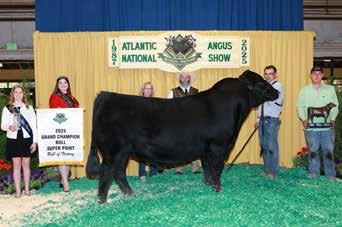
Grand Champion Bull
HB Expectation 3012
Owned by Horsley Bros & Wilson-Good Cattle Company

Reserve Grand Champion Owned Female
PVF Proven Queen 4087
Owned by Ashton Dillow

Reserve Champion Senior Showmanship

Fourth Overall Bred & Owned Female
PVF Blackbird 4134

Owned Junior Heifer Calf Champion Division 2
PVF Proven Queen 4211
Owned by Ashton Dillow

Lancaster, Wis. | May 25 | Lee Rincker, Illinois


Reserve Grand Champion Female

Reserve Grand Champion Commercial Steer


Bloomington, Ill. | June 6-7 | Judge: Joe Horstman, Ind.(Central) & Mitch Udell, Iowa(Preview)


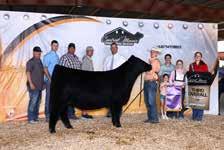
Central Illinois 3rd Overall Heifer CK3 Hawk Sandy Owned by Doehen Kirchner


Central Illinois 4th Overall Heifer Dameron Nellie 4115




Rhode High Roller 34
Owned by Preston Tyler Rhode


Res. Champ. Sn. Bull Calf
DAJS Double Take 066
Owned Doug Satree
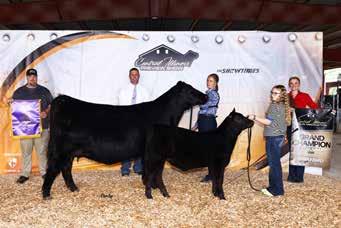
Illinois & Junior Angus Prev. Champ. Cow-calf
PVF Missie 3090
Owned by Chloe Boitnott

Reserve Overall Owned Female
DFA CB Forever Lady
M77
Owned by Paige Lemenager
3rd Overall Owned Female
CK3 Hawk Sandy L88 Owned by Coehen Kirchner


DAJS Clear View 626



PVF Proven Queen 4087
Owned by Ashton Dillow

4th Overall Owned Female
Dameron Nellie 4115
Owned by Max Dameron
5th Overall Owned Female
PVF Missie 3184 Owned by Chloe Boitnott








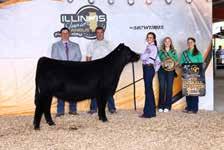




PVF Proven Queen 4087

Overall Female
PVF Blackcap 4135
Owned by Ashton Dillow

Overall Female
Dameron C-5 Northern Miss 2360
Owned by Paige Lemenager
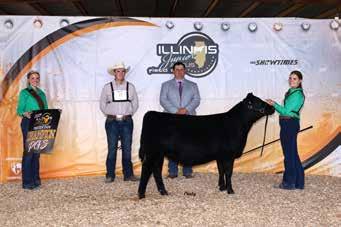

Overall Female
PVF Missie 3184








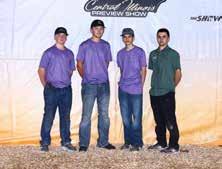













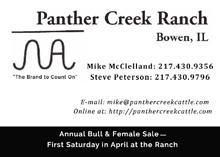
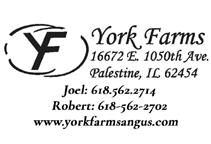












PRESIDENT
Craig Crutcher
815-289-2855
VICE PRESIDENT
Travis Meteer 217-430-7030
MEMBERSHIP SERVICES
Noah Benedict 217-372-8009
nojo1132@gmail.com
TREASURER
Buddy Edenburn 217-649-0108
BOARD OF DIRECTORS
Andrew Spinazola - 309-313-2191
Jimmy Bernard - 779-771-4687
Chad Crane - 815-712-5739
Yale Young - 815-867-7333
Lucas Stumpf - 618-830-0971
Tammy Boatman - 770-354-4195
Mark Stephens - 217-825-7913
Matt McCaskill - 217-779-0775
Corey Perry - 217-294-2934

Caden Perry during the fitting contest at the 2025 Illinois Hereford Preview Show.
Talk about a year that is flying by. It seems like the winter calving season was just starting, and now we are in the middle of summer. I hope that everyone has been blessed with the necessary rain that we need to grow hay and crops. In my area, our mud season lasted a little too long. Area farmers were able to just start getting into the field around Memorial Day. The moisture was accepted, but if we could have spread it out to some others that were in more need of it, I would have shared!
Mid-summer activities for many of us include the state preview show, Jr. Nationals, and Illinois State Fair. I was telling my youngest son that even though school had just gotten out, they will be back in no time. He didn’t give me the friendliest smile when I said that. With spring breeding season winding down and calves getting ready to wean, be sure to remember to market your cattle for the most money that you can. There are 2 sales at Carthage that can help you receive top dollar for your cattle, no matter what you are marketing.
As always, I hope that everyone has the best calf crop that they have ever raised
Sincerely,

Recently, our office made a monumental announcement that we believe will positively impact the membership for years to come. Effective June 5 th , the AHA transitioned to utilizing Weatherby’s Scientific as the official DNA lab for AHA genetic testing. The contract with Neogen will expire December 31 st of this year. Some of the benefits members will experience with this change will be: MD/DB testing will no longer be a separate charge when combining with a genomic profile, resulting in a $13 savings; horned/polled tests will be $8, resulting in a $8 savings; and a genomic test for cattle ages 0-6 months that includes parentage, genomic panel, and all known abnormalities will be $30. Additionally, turnaround times for results are expected to be unchanged or even improved. We are confident this change will be a net positive for all breeders as we press forward with
Additionally, excitement continues to build around the 2025 World Hereford Conference in conjunction with the AHA Annual Meeting as well as the American Royal. If you are able to attend, I strongly encourage you to be present for the duration of the week to be part of the camaraderie and fellowship as we welcome our international friends in Kansas City. The pre and post tour registration is now closed as the spots are filled, however, registration is still open until September 1 for the WHC events in Kansas City. If you have any questions, please contact the AHA office and they will be happy to assist.

Territory 5 Field Staff
May 1 marked my first trip around the sun as fieldman for Territory 5 of the AHA, and what a year it has been. They say when work doesn’t feel like “work”, you know you are where you need to be. I truly feel blessed to be employed by one of the finest organizations in the entire agriculture industry, and I am excited to continue serving the AHA membership as best I can.
We look forward to seeing you all at various events throughout the rest of the year. If we at the AHA can help in any way, feel free to reach out.
All the best,
August 23rd and 24th - Northern, IL
August 23, 2025: Day 1
Storey Show Cattle 12:00 pm - 2:00 pm
Lunch, with Herd Visit to follow
Address: 7456 East Townsend Road, Stockton, IL 61085
The Storey Family invites you to join us for lunch during the 2025 Illinois Hereford Tour. Come walk through our herd of registered cow calf pairs. At Storey Show Cattle we strive to raise quality Hereford females that are able to excel in the show ring while also adding value to our cow herd. We can’t wait to see everyone at this year's tour.
Thousand Hills Herefords 2:30 pm - 4:00 pm
Herd Visit
Address: 1709 Summit Dr, Stockton, IL 61085
A cowherd consisting of 35-head that concentrates on carcass merit and confirmation. A high priority has been placed on teat and udder scores, longevity, and cow families when purchasing herd sires. For the first time, Thousand Hills Herefords was named a Gold TPR Breeder, alongside having three cows on the Dam of Distinction list. This program is placing a growing emphasis on Genomically tested EPD’s and Ultrasound Data as well.
Perks Ranch 5:00 pm
Herd Visit, Live OPU Demonstration by SVS Repro, AHA Update, and Dinner
Address: 12526 N Weldon Rd, Rockford, IL 61102
Perks Ranch consists of 600 acres of rolling grass pastures, cropland, and protected forests, and runs around 120 head of registered Hereford cows and commercial cows used for the ET program as recipients. The ranch hosts a female production sale the 2nd Saturday in October each year, featuring a strong set of show heifers, replacement females, and bred cows, and an annual bull sale each year in March. The ranch was founded in 1961 by The Doug Perks family and managed and operated by The Tom Boatman family.
August 24, 2025: Day 2
Richardson Farms 8:30 am - 10:00 am
Herd Visit
Address: 7789 Coon Trail Rd, Capron, IL 61012
Richardson Farms got its start after the purchase of an open heifer in the fall of 2012. The operation has now grown to around 20 head of cows. We take pride in exhibiting bred and owned heifers at the state and national level. Additionally, we market all other calves to local show families and Hereford breeders. Select heifer and steer prospects are available by private treaty in the fall, while frozen genetics are available year-round.
Mud Creek Farms 11:00 am - 12:30 pm
Herd Visit
Address: 6372 Edwardsville Rd, German Valley, IL 61039
Mud Creek Farms has been breeding Hereford cattle for over 30 years and currently runs around 30 cows. We’ve focused on marketing show cattle, replacement females, bulls, and freezer beef. We greatly appreciate the relationships we’ve built over the years with fellow Hereford breeders and look forward to hosting them on the tour!
* Anyone who attends all 5 tour stops will be entered for the chance to win a $250 sale credit for the 2025 IHA Winter Classic Sale *
Hotel Block Information for the evening of August 23rd: Holiday Inn Rockford, an IHG Hotel - 7550 E State St - Rockford, IL 61108
Rate: $119/night plus night
Block Name: Perks Ranch

Illinois Hereford Association,
Once again, it is time to start prepping for the Illinois Hereford Association Winter Classic Sale!
The IHA Board has prioritized adding value for the Illinois Hereford Association membership. This now established, annual event is a way for all members to market the best of their herds, and connect with breeders and commercial cattleman from all over the state.
The Illinois Hereford Association Winter Classic Sale will be held on December 13th, 2025 in Carthage, IL at Carthage Livestock Inc. Brent and Kris Lowderman are incredible hosts, are a huge part of this sales success. They have and will continue to do incredible work for the Hereford breed, making this the perfect spot to continue to build this sale. Once again, Cody Lowderman will be serving as the auctioneer for this event.
I will be handling the screening process again for the IHA this year. The IHA board and I want to ensure quality stays consistent to help everyone turn as much profit as possible. All the nomination forms for the sale will be due on August 1st. Shortly after the first, I will begin planning to travel to farms with said nominations to screen the cattle.
When selecting cattle to nominate, I highly encourage you to select cattle that represent the best your program has to offer. The IHA Board sees the Winter Classic Sale as an annual event for breeders to purchase elite Hereford seedstock. To make this sale a household name, we must continue to improve. Cattle with phenotypic quality, popular pedigrees, and desirable genomic profiles will add value and make this sale a success. The board and I will be placing a big focus on selling quality bred heifers and fall cow-calf pairs. New this year, a select number of single lot bred cows. The quality of the nominations in this division needs to be very high.
In the rest of this document, you will find the calendar of events, the general rules and requirements for the sale, and the nomination form. If there are any questions, please do not hesitate to reach out.
The IHA Board and I are both looking forward to building this sale for year three. We would love to work with any members of the IHA on consigning to this sale.
Sincerely,
nojo1132@gmail.com
The Illinois Hereford Association Winter Classic Sale is a screened sale. All cattle must first be nominated by the August 1st, 2025 deadline. All nominations must be accompanied by a non-refundable $50 per-lot nomination fee. If cattle are accepted after screening and consigned to the sale, this $50 fee will be credited to the consignor’s sale expenses. No cattle will be accepted that have not gone through the nomination and screening process. Any member of the Illinois Hereford Association that has paid their dues in 2024 and been accepted after nomination and screening is allowed to consign to this sale.
Other requirements:
1) Membership dues for the IHA Association for 2025 must be paid by the time of nomination.
2) No animal will be accepted without actual (individual) EPD’s available by the time of cataloging. If EPD’s are not available at cataloging time, the animal will be rejected and no refund of fees will be made.
3) Any known carrier of any genetic defect will not be allowed to sell.
4) There shall be no substitutions after cataloging and there will be no refund of nomination or entry fees if an animal is not brought to the Winter Classic Sale. Substitutions may be made only prior to cataloging with screener approval.
5) Age of cattle:
a. All bulls must be at least 12 months of age, and no older than 30 Months of age
b. All females in sale must be under 5 years of age with calf at side or confirmed bred -New in 2025: A select number of bred cows will be allowed in the sale. Screener will be critical on age, quality, AI breeding, ultrasounding, and genomic EPD’s
c. Open females will be allowed in the sale, but in a limited amount
6) Bull Requirements
a. Must have passed a Breeding Sound Exam (BSE) within 30 days of the sale
b. Must have Genomically Enhanced EPD’s (GE-EPDS) and DNA on profile with the AHA
7) Female Requirements
a. Females being sold as bred to be confirmed on health papers within 30 days of sale -Females due to calve between the sale and 2/15/25, have the option to provide a health paper within 60 days of sale to confirm pregnancy, alongside their standard health-paper within 30 days of sale
b. Females must be bred to have their first calf by 30 months of age
c. RECOMMENDED that females are ultrasounded to determine sex of the pregnancy
d. RECOMMENDED that females have GE-EPDS and a DNA on profile with the AHA
8) Health –
a. All cattle are required to have separate, official interstate health papers at sale time. Do not place multiple animals on one form.
b. All cattle must have a RFID or metal tag per state regulations. Suggested tests are Bangs, Anaplasmosis, Tuberculosis, and BVD. If your animal(s) sell into a state requiring listed tests, breeders will take the subject animal to its origin, have it tested, and once cleared, arrange shipping to the buyer.
9) Substitutions can be made up until the catalog deadline. They must be approved by the screener before said deadline.
10) Withdrawals made after cataloguing are responsible for average sale expense of lot type.
11) Withdrawals made after cataloging are responsible for average sale expense of lot type.
August 1
All nominations must be either post marked or emailed along with the $50 per lot nomination fee. *Nomination fees are non-refundable but will be figured into sale expense if the animal is accepted.
August 1st - October 1st I will be making screening arrangements to be made.
October 15
All information for catalog is due. Footnotes, pictures, breeding information, etc. Substitutions cannot be made after this date.
December 12 – 3 pm
All Cattle in place at Carthage Livestock Inc.
December 12 – 6 pm
Illinois Hereford Association Social
December 13 – 11:30 am
Illinois Hereford Association Winter Classic Sale
When selecting your animals to nominate, please keep in mind the rules and recommendations listed above in the document. All bulls to sell must have their DNA profile completed, and all females 30 months of age or older must be bred or have a calf at side. All cattle must be registered and have EPD’s by the time the catalogue is produced. Also, remember that your 2025 dues to the IHA must be up to date. Please Contact Buddy Edenburn or Noah Benedict for this.
Make checks payable to the Illinois Hereford Association. The fee is $50 per lot nominated. This is non-refundable but will be figured into sale expense if your nomination is accepted. Mail checks to Noah Benedict – 165 White Pines Cir Decatur, IL 62521
Farm Name:
Mailing Address:
Farm Address (where screening will happen) :
Phone Number:
Email:

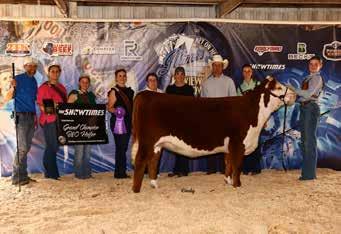








LCC






MMK 1502 Valerie 2404 ET

RGR Trixy Gypsymark 17Z 984ET











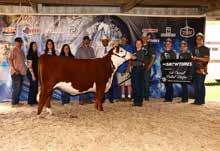







Champion Nash Lowderman Reserve Champion Mattie Melendrez
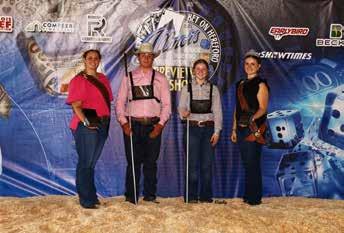










Prospect Awards





Speeches
Faith Benedict, Ella Crane
Not pictured: Owen Crutcher, Payton Garnhart, Corbin
Perry
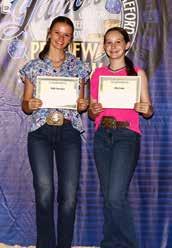





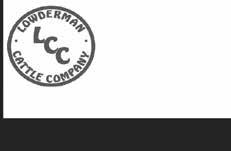











Illinois Charolais Association O cers
President: SharleneBullard- 815-343-9381
Vice President: Marla Todd- 217-840-5949
Secretary/Treasurer: Robb Creasey- 309-255-7799
Members: LaFraise Farms, Flanagan
Dale - ehcstreB 5-67 4-4419 5932-476-518Steve - ehcstreB
Bertsche Farms, Flanagan Troy Bertsche- 815-67 4-1244
Bewely Farms, Yates City Beau Bewely - 309-358-143 4 / 309-208-0786

Bullard Cattle Co., Cornell
Paul Bullard- 815-343-9380
Sharlene Bullard- 815-343-9381
Creasey Charolais, Macomb Robb Creasey- 309-255-7799
D-Mar-Mac Charolais, Warsaw Sam Zumwalt- 217-256-4619
Tom Engel, Flanagan815-674-5140
Grusy Bros., Gridley
Frank Grusy- 309-747-2696
K&D Cattle, Elizabeth Kelley- 815-275-8904 Devin- 815-858-2318
Nord Farms, Bloomington Ron Nord - 309-275-0409
Barnard Farms, Foosland Matt Barnard217-417-7699
Michael Potthast, New Douglas217-456-1266
Joseph Potthast, Sorento - 217-456-1266
Christine Potthast, New Douglas217-456-1266
Roger Elliot, Greenview - 217-416-8981
Marla Todd, Foosland - 217-840-5949
Steve Hoag, Illinois City - 563-506-0544
Link Livestock, Rio 309-297-0293




Several years ago my wife had a blog that all the cool kids were reading, and she encouraged me to write a couple submissions- this one popped up last week for Father’s Day, and I think it bears repeating to a wider audience – hope you enjoy it! JRW
Today is Father's Day, which is a perfectly fine Hallmark Holiday – low-key and probably involving a cookout or other fine meal, which is a wonderful thing in my book! I asked my wife for there to be no purchased gift for me as we are working diligently to "be lean" in our budget right now. But today, I was presented with the first of what I think will be several homemade cards and notes from my girls – they include prose such as:
"Nok Nok, Hoos ther, Dad, Dad Hoo, Dad I Love you"
"Hoo Hoo luvs you, Anna dus, Anna dus"
Kindergarten spelling is a hoot! And there is nothing that could have been purchased that would have made me happier!
When we get older, we have a little more trouble expressing how much we love our family. Sure, we can buy a $3.99 card at the store about how Dad likes to burp, take naps or play golf (my dad only does one of those three things – you guess!) but it doesn't capture the culmination of 50 years worth of experience, advice, guidance and example that he's provided to you.
Growing up on a livestock farm gave me an experience with my dad and Grandpa that can't possibly be matched by any other lifestyle. From the time I was old enough to ride in the truck, I was with them every day. All summer. From the time I got home off the bus until dinner (or after). Learning, watching, helping, doing. I've thought about them a lot this week. We just finished baling some hay, and I thought about how long it would be before I taught my daughter to drive a truck out in the middle of a hayfield, like my grandpa did for me when I was eight. Just yesterday, when we were at the Webel Farm, Anna wanted to ride up to the shed to see "Fluffy" the cat. She wanted to ride with my grandpa, and he told her, “Hurry up, get in." in the exact tone and voice that I have heard him use a million times with me since I was her age. I chuckled under my breath and smiled. At 86, he's still hurrying everyone along.
Dad and I have always worked very well together, though even to this day, I probably can't keep up with him. I think I was pretty willing to do whatever job he assigned me to and tried to do the best I could to do it right. There was no shortage of instruction available from him or grandpa if something wasn't quite right, which led me to try to do things right the first time. To this day, I quote from dad and grandpa all the time to my kids about how it takes a lot less time to get out and close a gate than it does to get the cows back in if they get out...... While that advice was meant specific to the job of closing a cattle gate, the lesson applies in a lot of areas of our life.
Working livestock together as a family also has always had a certain artistry about it. We've worked together so much that we can read exactly what the animals are doing and what each other is doing to know where to go, whether to push the cattle or fall back and give them space. In emergency situations, such as delivering a calf, after the first year or two of helping dad, it was almost like we could do it without even talking – both knowing what the other was doing next, knowing that we both knew what to do to save the calf and mother. Those situations taught character, responsibility and dedication to the animal.

Now that I'm a dad of four little ones and living on my own farm operation, I look for opportunities to teach my kids the lessons I learned at their age. Lessons about life, and death. About doing your work first and playing later. About caring for the animal's needs and comfort even when it means sacrificing your own. I watch my six year old, and now even my two year old who wants to, "Check cows, Daddy?" and wonder if they believe, like I did, that their daddy knows everything that there is to know (at least until they get about 16 – then dads get really smart again about the time you get to be about 22). And I believe that even at their age, they have the stockman's knack – dad thinks it is hereditary; he's probably right again. And I wonder if someday they will be able to work beside me with the same ease and satisfaction that we are doing it together. I miss that about not working with my dad every day.
But I guess I learned most from my dad and grandpa by watching them every day. Learning by what he did – how they handled animals, how they dealt with people, how they valued family and how they expected us to expect the most out of ourselves. So, I guess what I've learned about being a father so far is that someone is watching all the time, and the way they feel about the world will be largely influenced by how I've handled the situations that come my way, and how involved they've been in that life. I believe that our family was blessed beyond belief by the dad we have the privilege to grow up learning from, and who we still learn from every day. And 30 years from now, if my kids feel the way about me that my brother, sisters, and I feel about our dad, I will be awfully proud to have carried on that legacy. Nok Nok, Hoos ther, Dad, Dad Hoo, Dad I Love you Happy Father's Day, to my dad and all of the dads who work so hard to do it the right way,

Jacksonville, Ill. | June 8
Photos by Cindy’s Livestock Photography

Grand Champion Purebred Heifer
DWYWE WGB Lana 390L
Owned by Mabrey Schick



Reserve Champion Purebred Heifer
GRAJ Diamond Girl 479M
Owned by Addison Bartlow

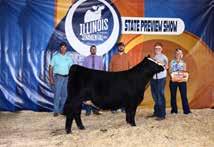
Resverve Champion Bred & Owned Heifer
CGCC Miley
Cole Glick



Jacksonville, Ill. | June





2025 Preview Show - Steers/Bulls
Jacksonville, Ill. | June 8

Grand Champion Steer
Vondracek Prince 1V24
Owned by Scarlett Schleich

Grand Champion Bred & Owned Purebred Bull
Lemenager AAAYYY The Largesr
Owned by Curt & Grace Lemenager

Grand Champion % Bull
TCK Motley Crue
Owned by Ty Knodle

Reserve Champion Steer
LGC Here I Am 30M
Owned by Maci Brooks

Reserve Champion Purebred Bull
DF Pappy Ban Winkele 34 N
Owned by Jemma Dorsey

Jacksonville, Ill. | June 8
Photos by Cindy’s Livestock Photography
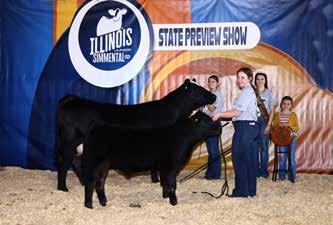
Grand Champion Purebred Cow-calf
Kane's Sheza Wreck 39L
Owned by Lindy Kane
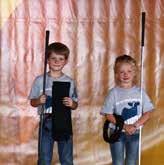
PeeWee Showman
Stetson Beckman & Josie Barker

Junior Showmanship Champion: Carson Beckman Reserve Champion: Jade Range

Reserve Champion Purebred Cow-calf
JSUL Rosie 3438L
Owned by Jemma Dorsey

Intermediate Showmanship Champion: Mabrey Schick Reserve Champion: Conley Schick

Senior Showmanship Champion: Claire Dorsey Reserve Champion: Brenna Bartlow
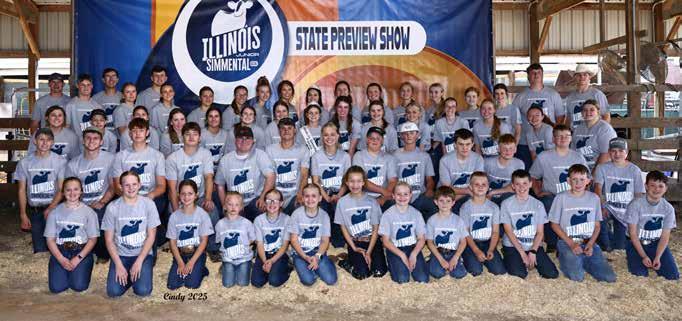
Clinton, Ill. | June 7-8

MM Cumberland Rose PK 61M
Owned by Case Ispringhausen

Grand Champion Bred & Owned Purebred
Heifer
TRN Maddie Mirage 401
Owned by Callie Turner


WBF Brandy Girl

Reserve Champion Bred & Owned Purebred
Heifer
RSSR Margie's Matlock
Owned by Sloan Reedy

Clinton, Ill. | June 7-8

Reserve Champion Bred & Owned Shorthorn Plus Heifer
T2 Tallula
Owned by Toby Behrends

Champion Shorthorn Steer
Image of Slim Shady ET
Owned by Colby Metzger

Champion Bred & Owned Shorthorn Steer
Caleb's kasparas
Owned by Caleb Smithers


Champion Shorthorn Plus Cow-calf
T2 MayBelle Starr
Owned by Toby Behrends

Reserve Champion Shorthorn Steer
FSF Perfection 457 ET
Owned by Knox Rutledge

Clinton, Ill. | June 7-8

Grand Champion Plus Steer
Money Owned by Lane Mollett

Prospector 1
Showmanship
Champion: Case Isprinhausen
Reserve Champion Levi Hodgeman

Prospector 2
Showmanship
Champion: Maddox Reedy
Reserve Champion: Josie Turner

Reserve Champion Plus Steer
SAM Owned by Masyn Riggins

Intermediate Showmanship
Champion: Callie Turner
Reserve Champion: Laci Wernicke

Senior Showmanship
Champion: Ellen Klein
Reserve Champion: Alyssa Miller
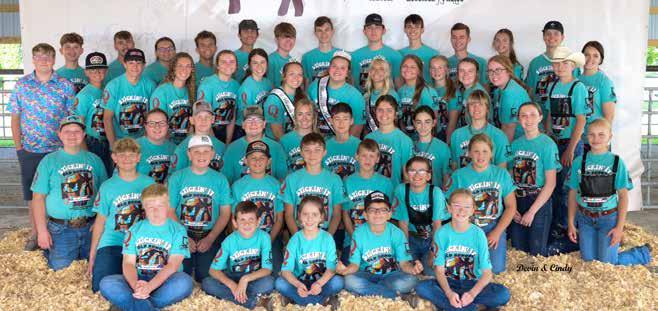

















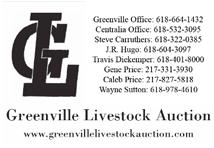





























Illinois Beef, printed bi-monthly, is the official publication of the IBA. It serves as the voice of Illinois’ 12,000 beef producers.




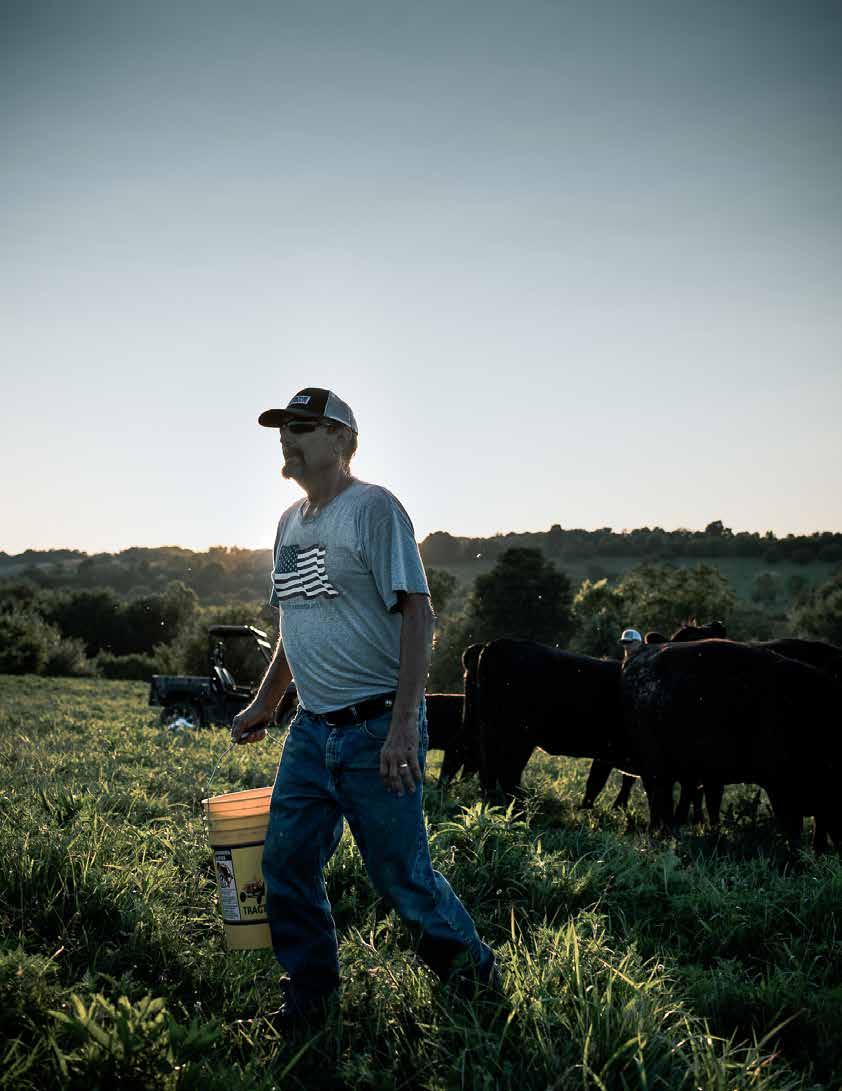
Getting things done takes sweat. Getting it done right, takes pride. BQA is proud to launch all-new online certification modules. It’s on-demand training to help you stand tall against everyday challenges. Get after it at BQA .org. Funded by the Beef Checkoff.
